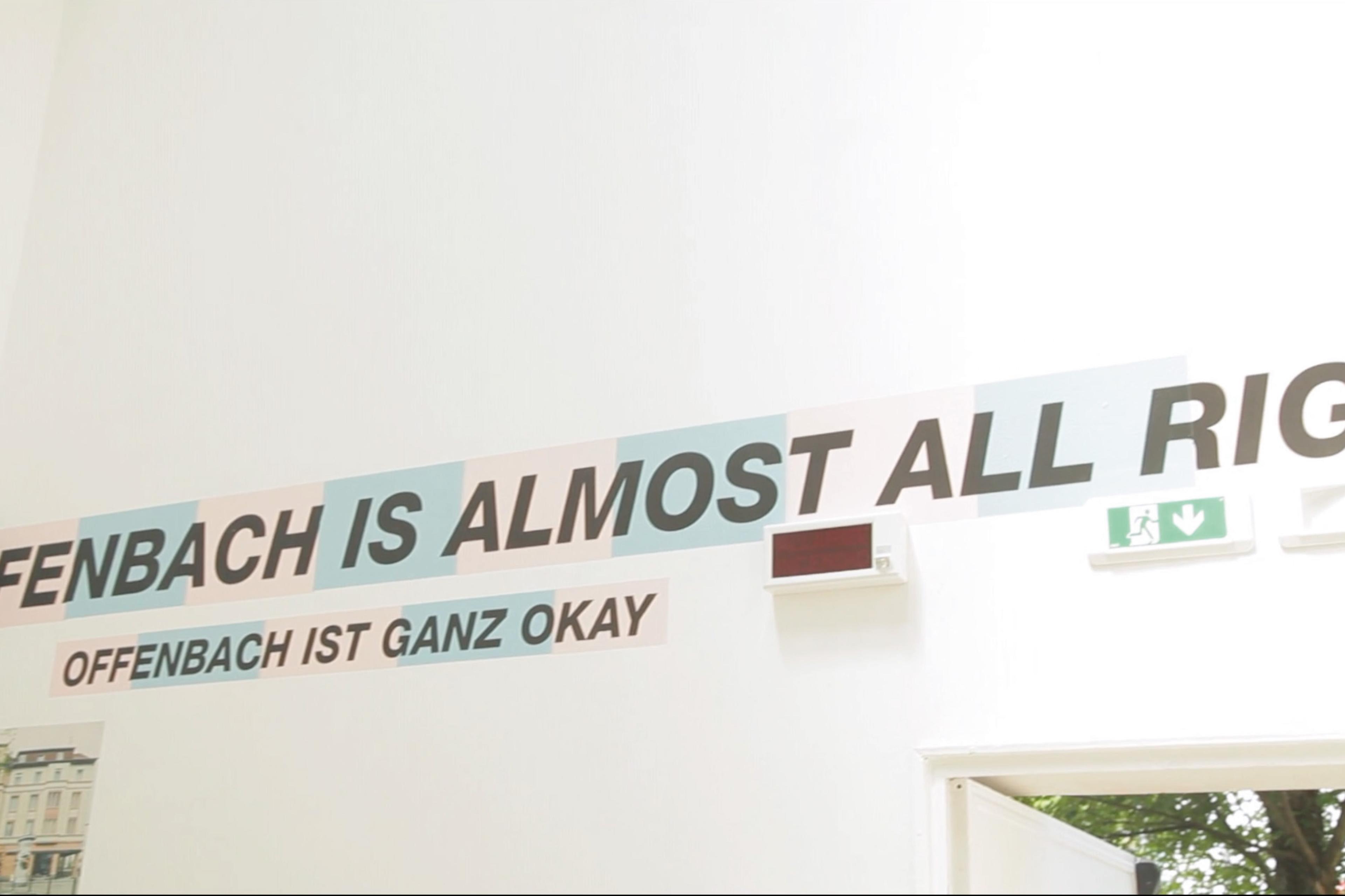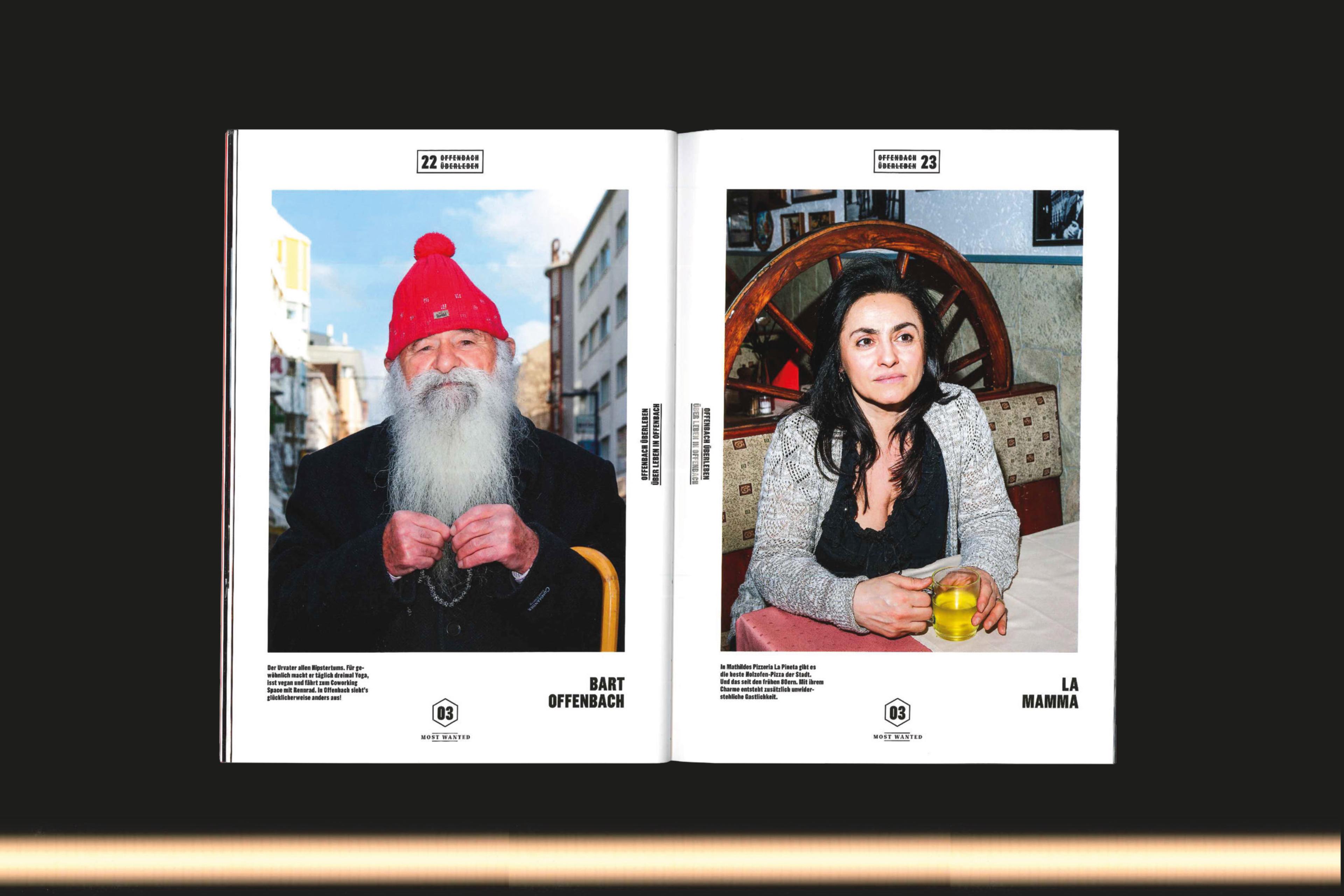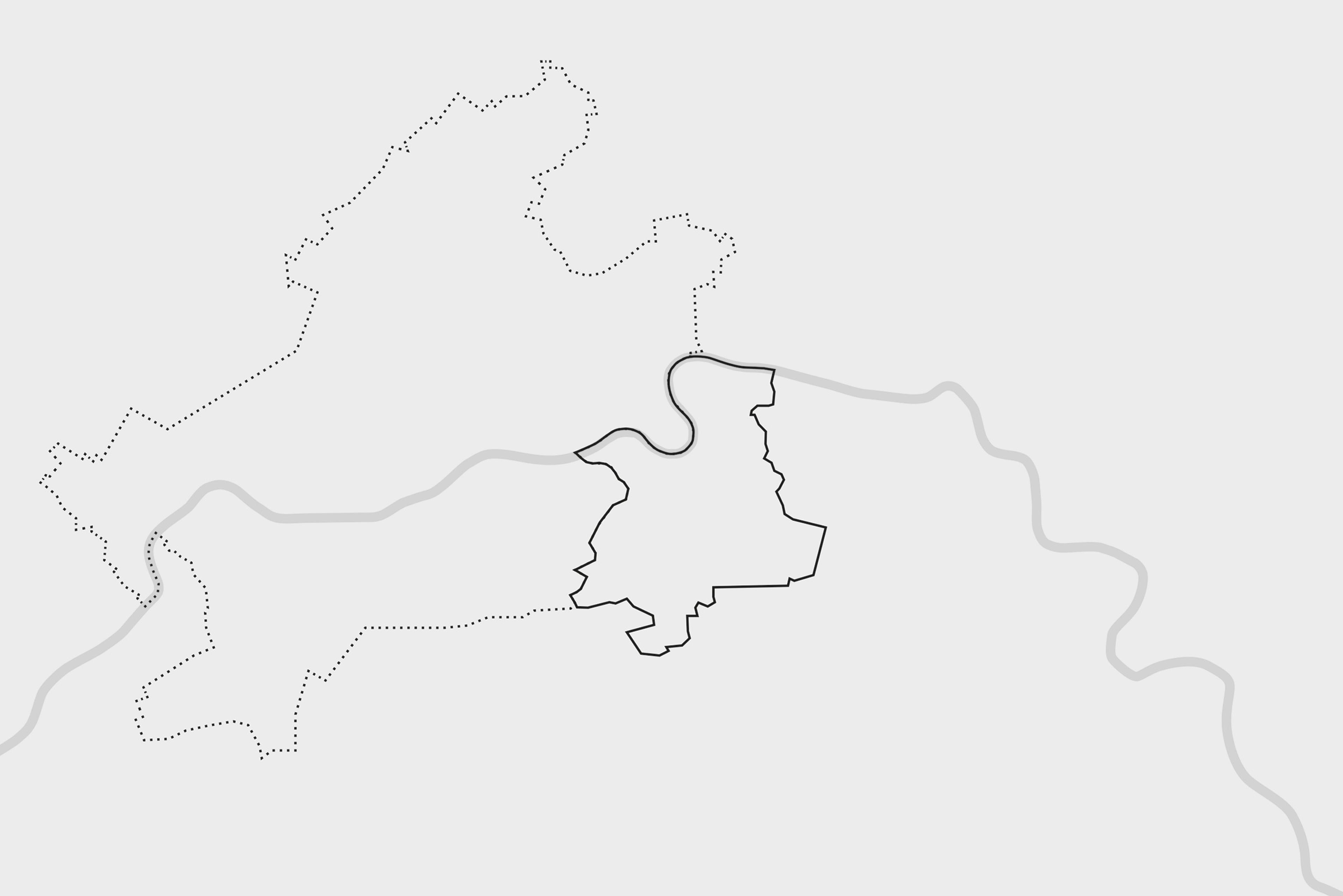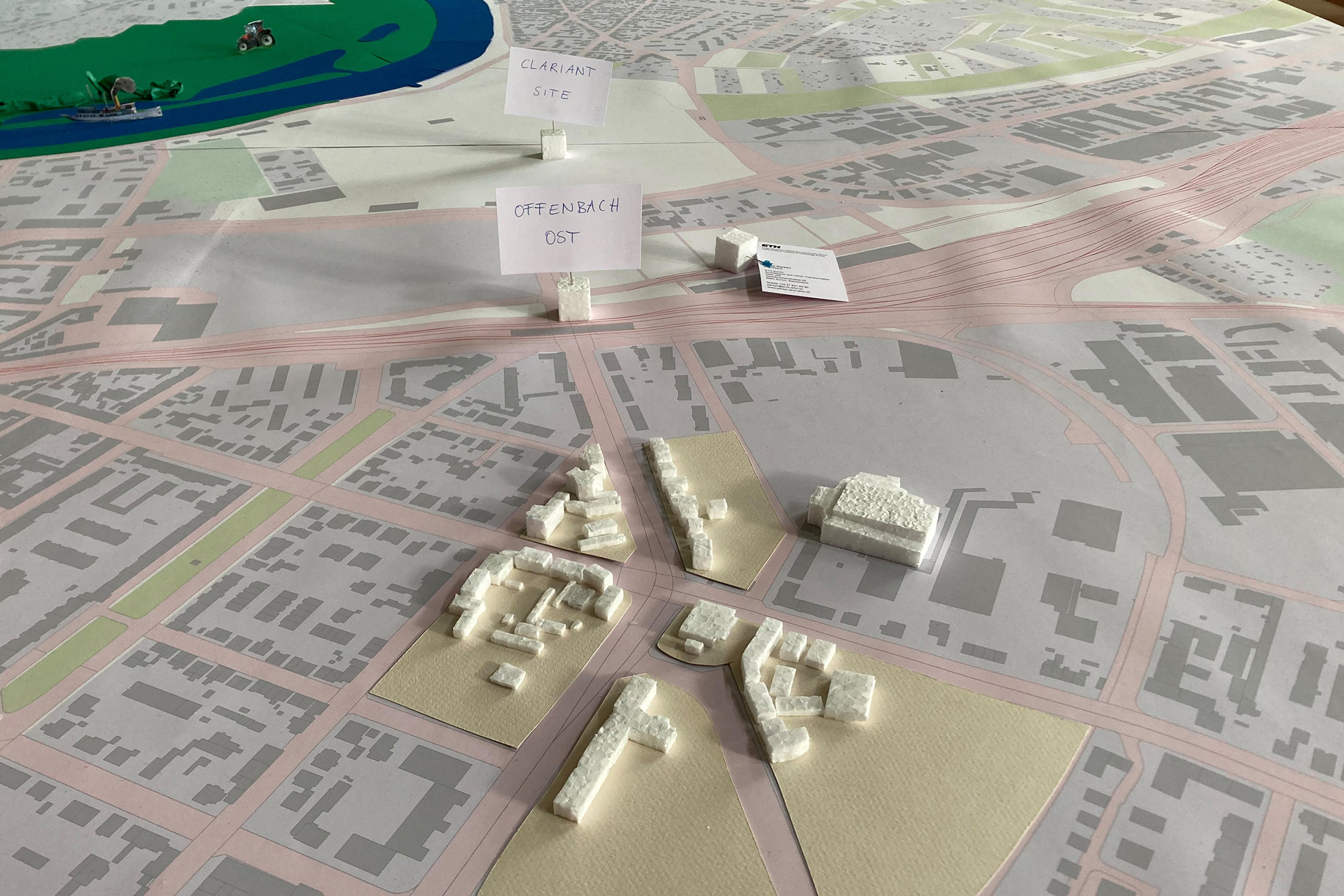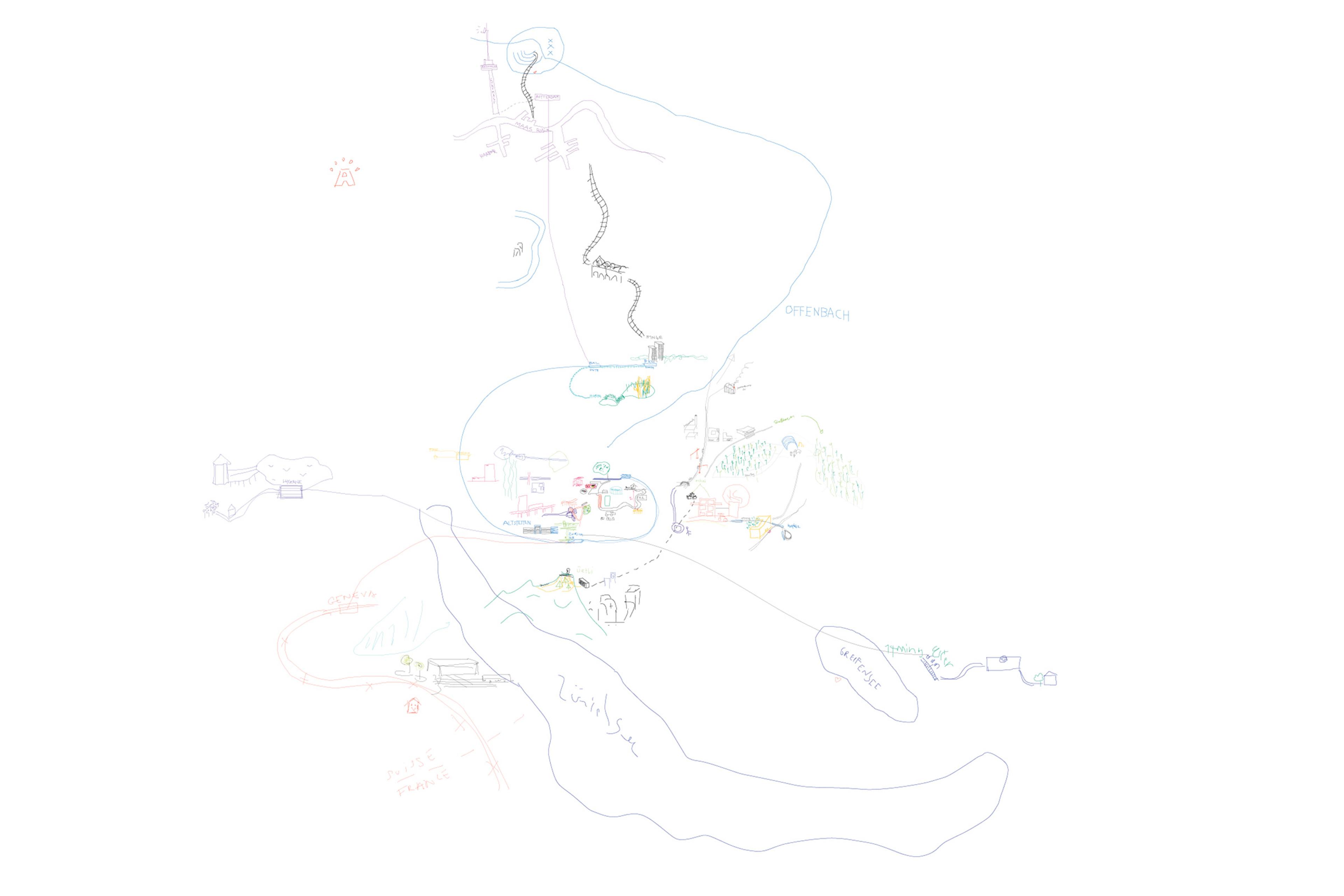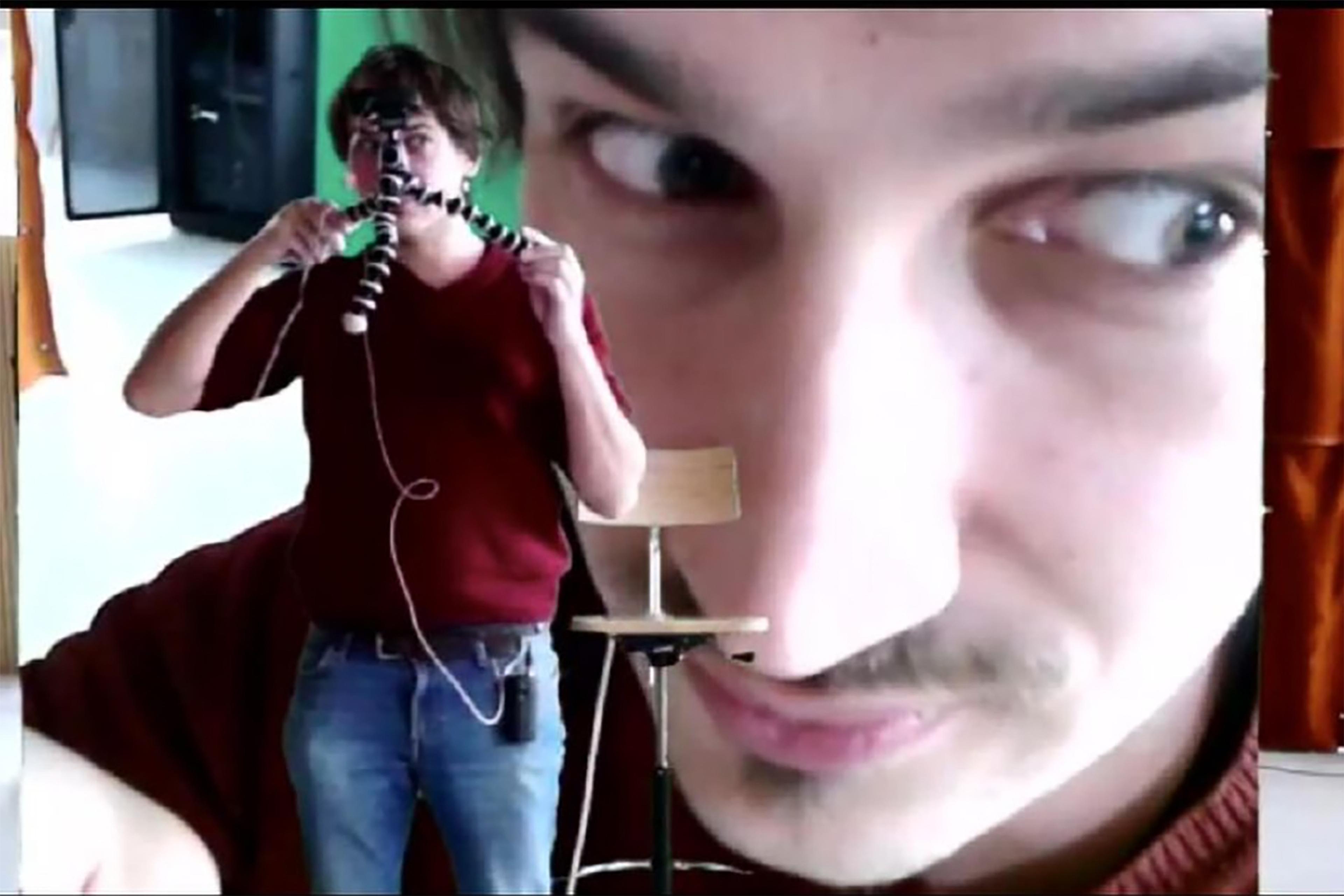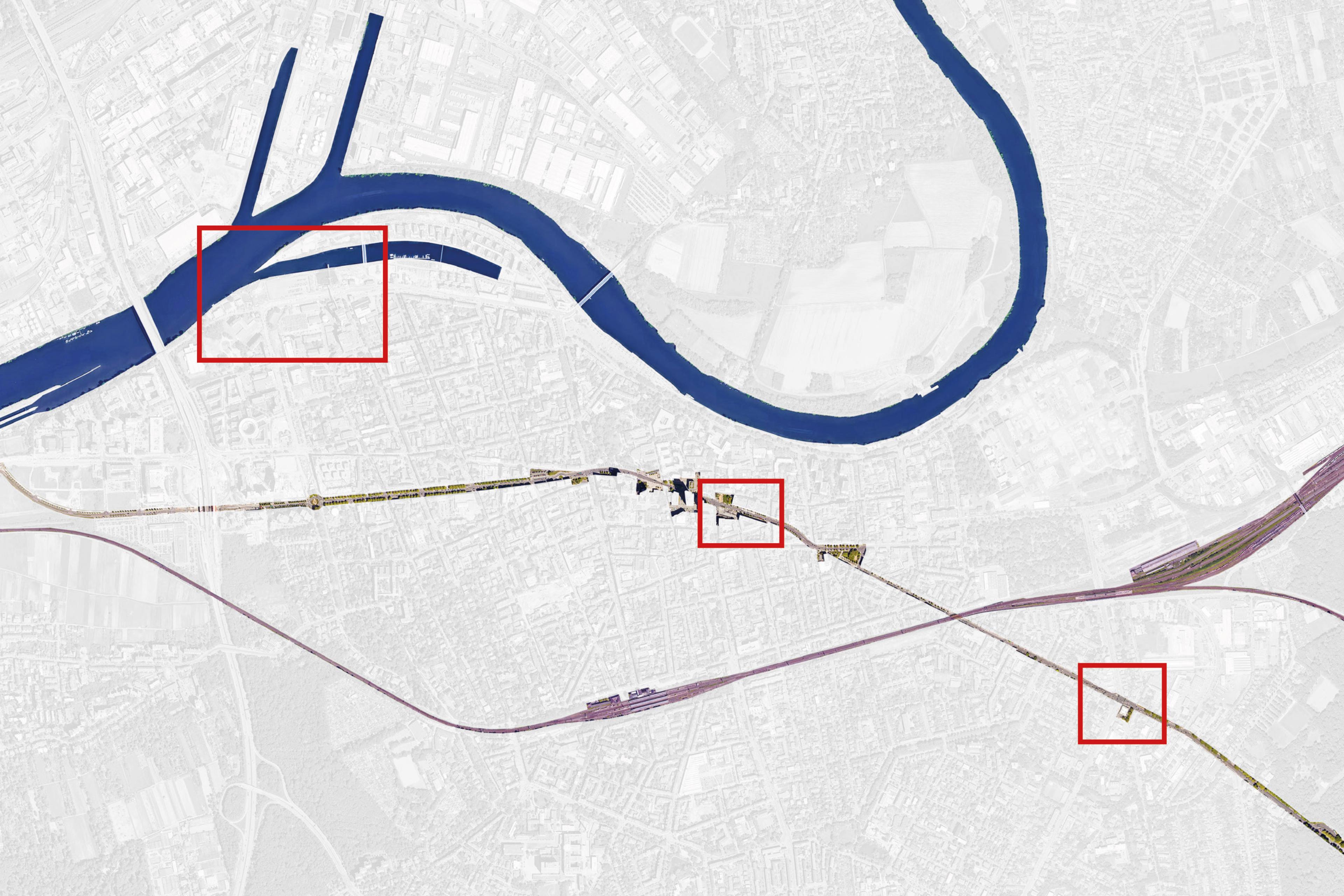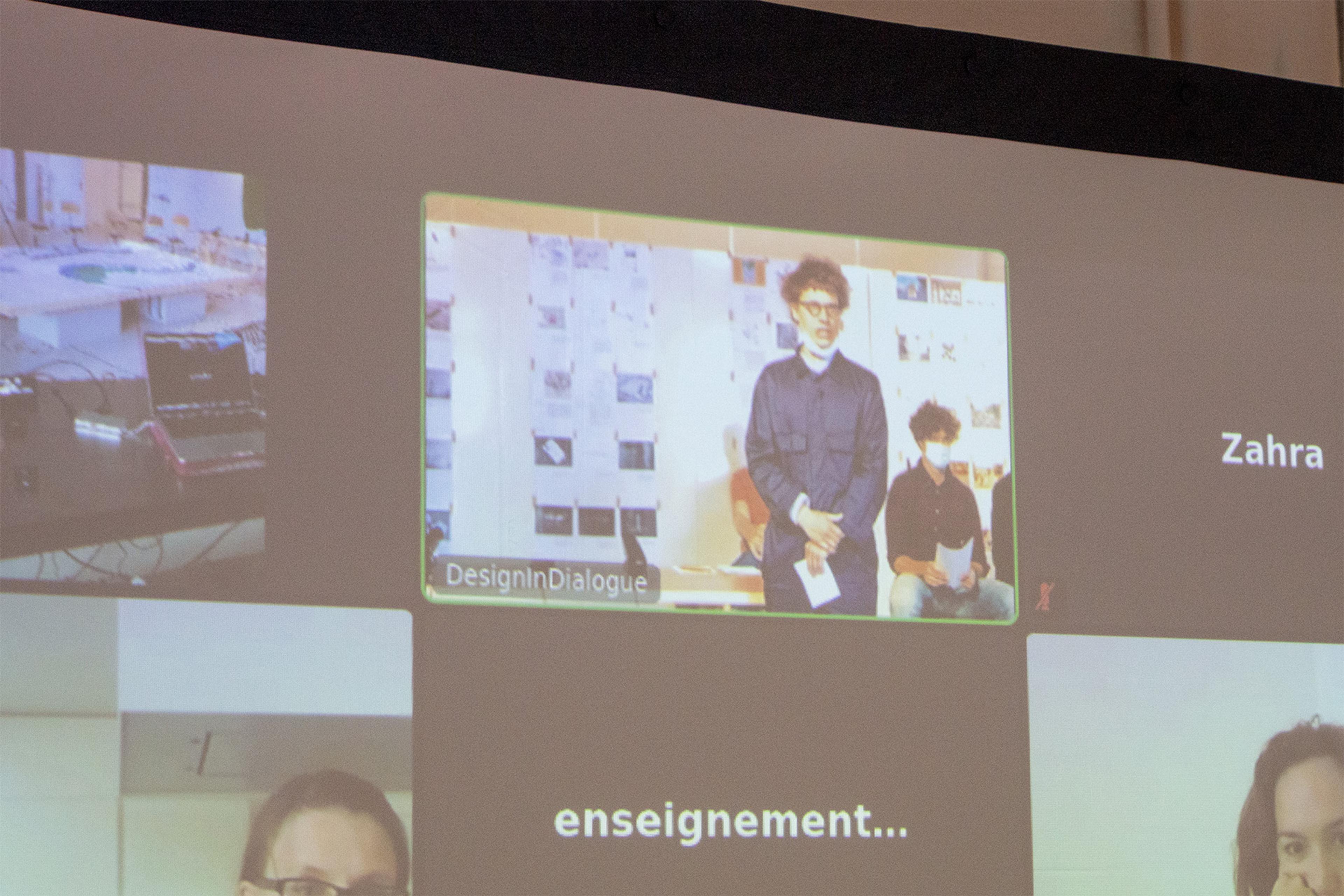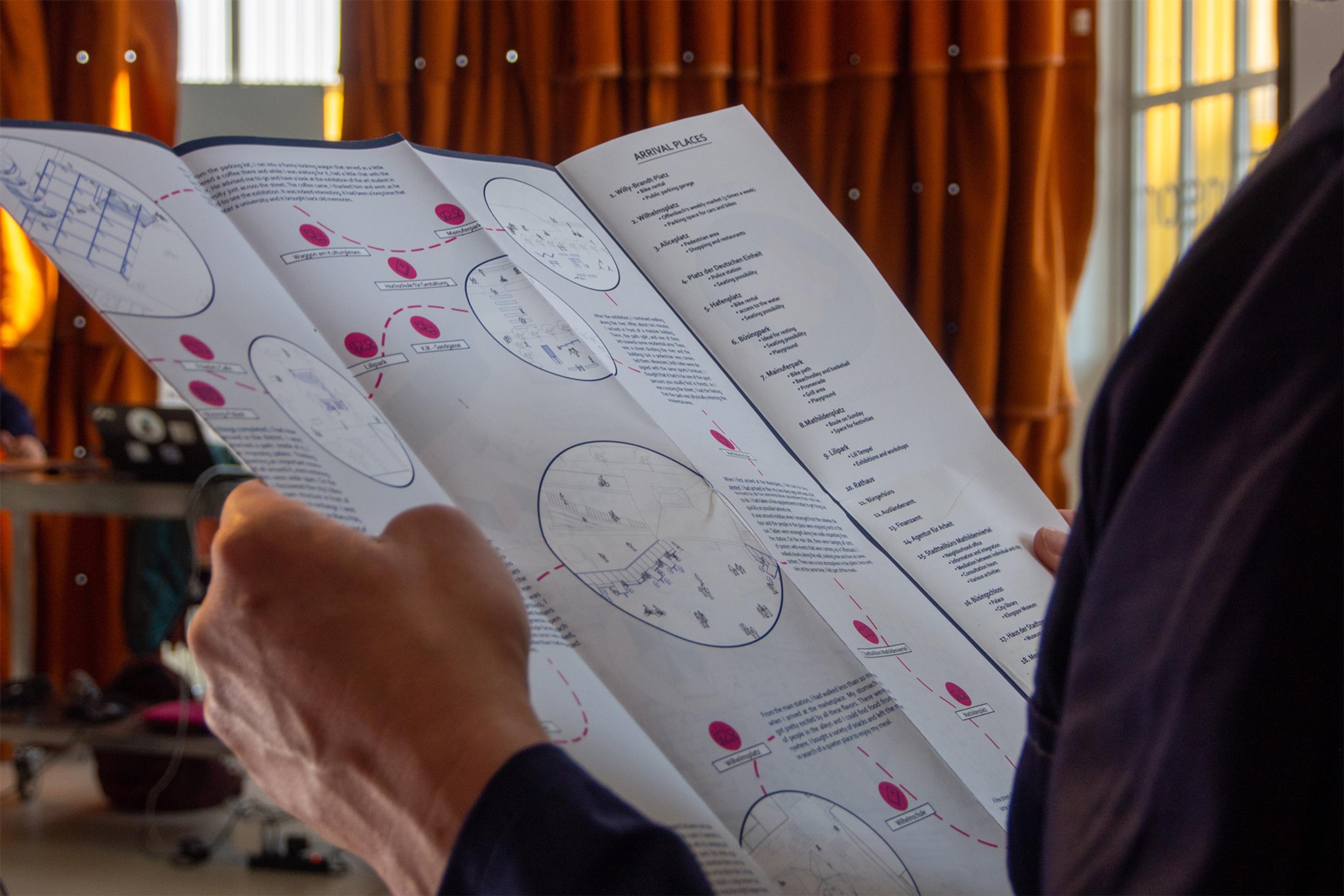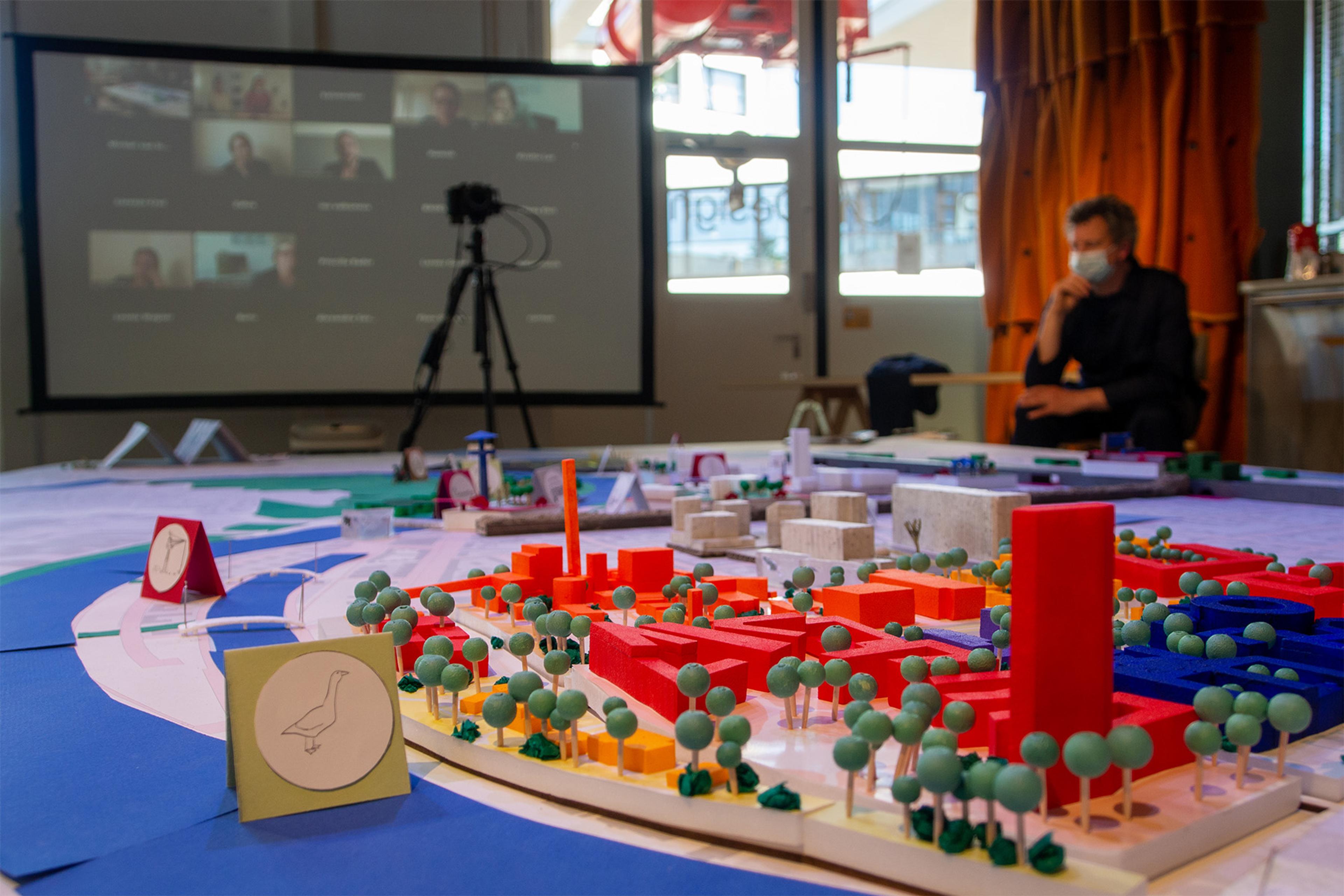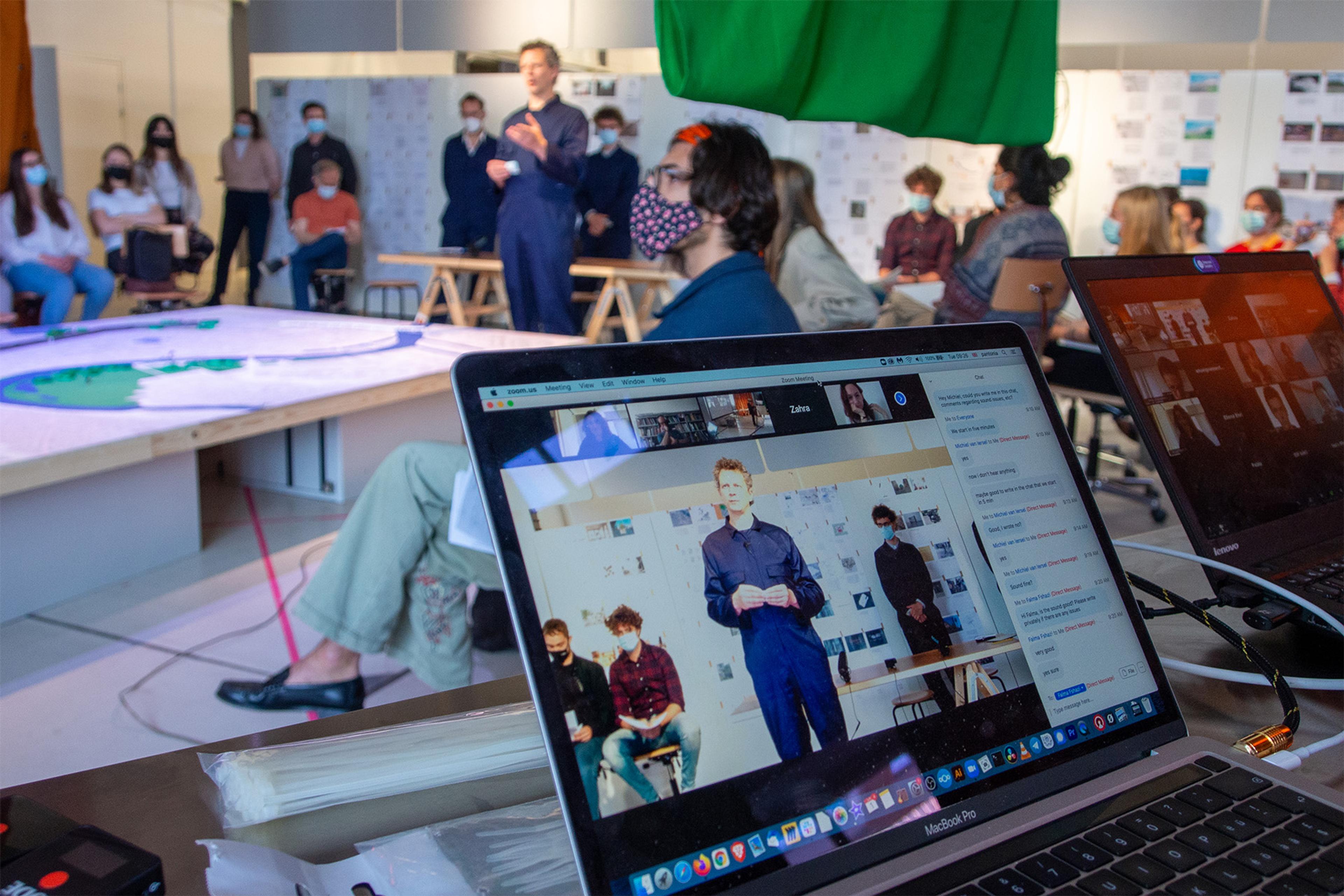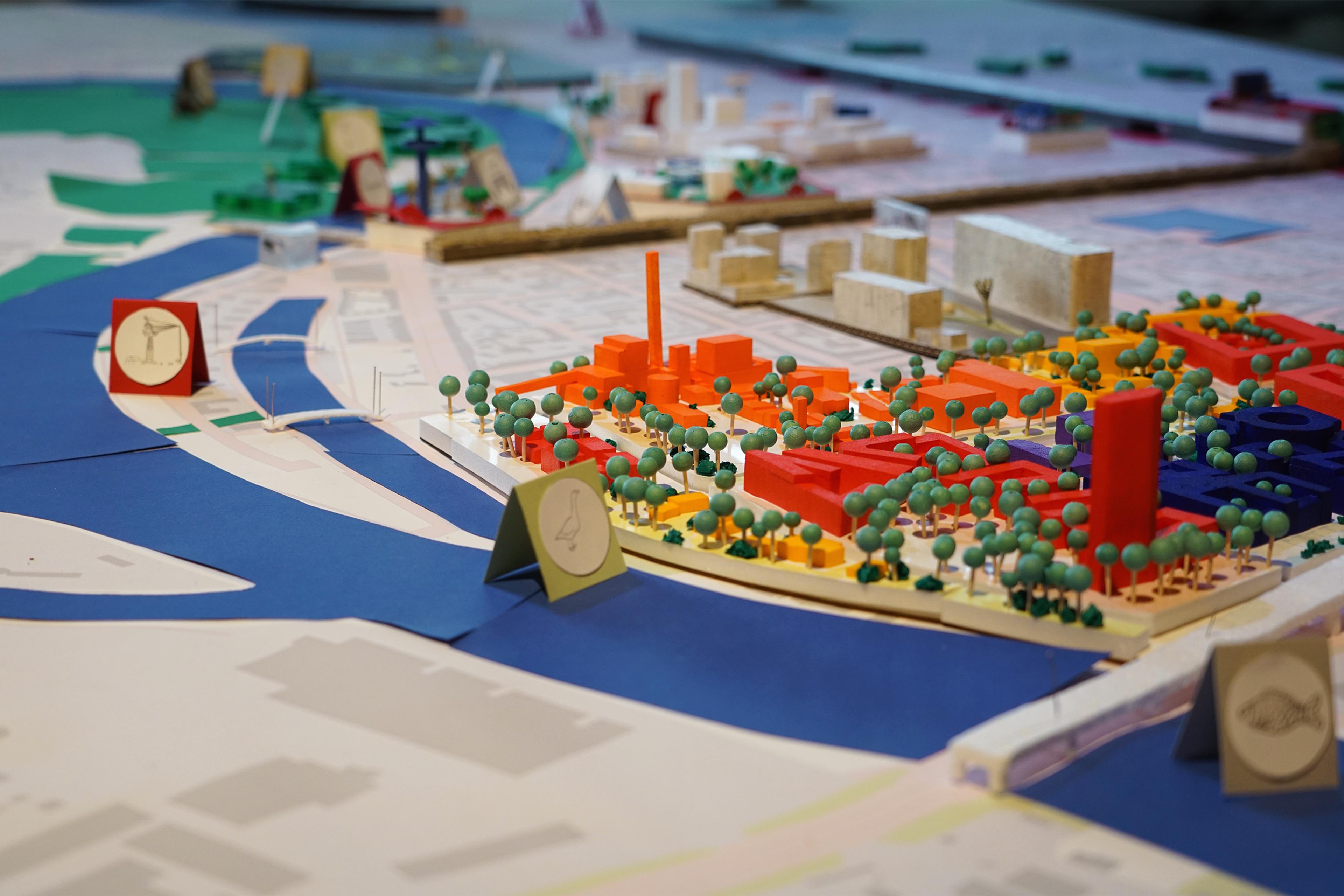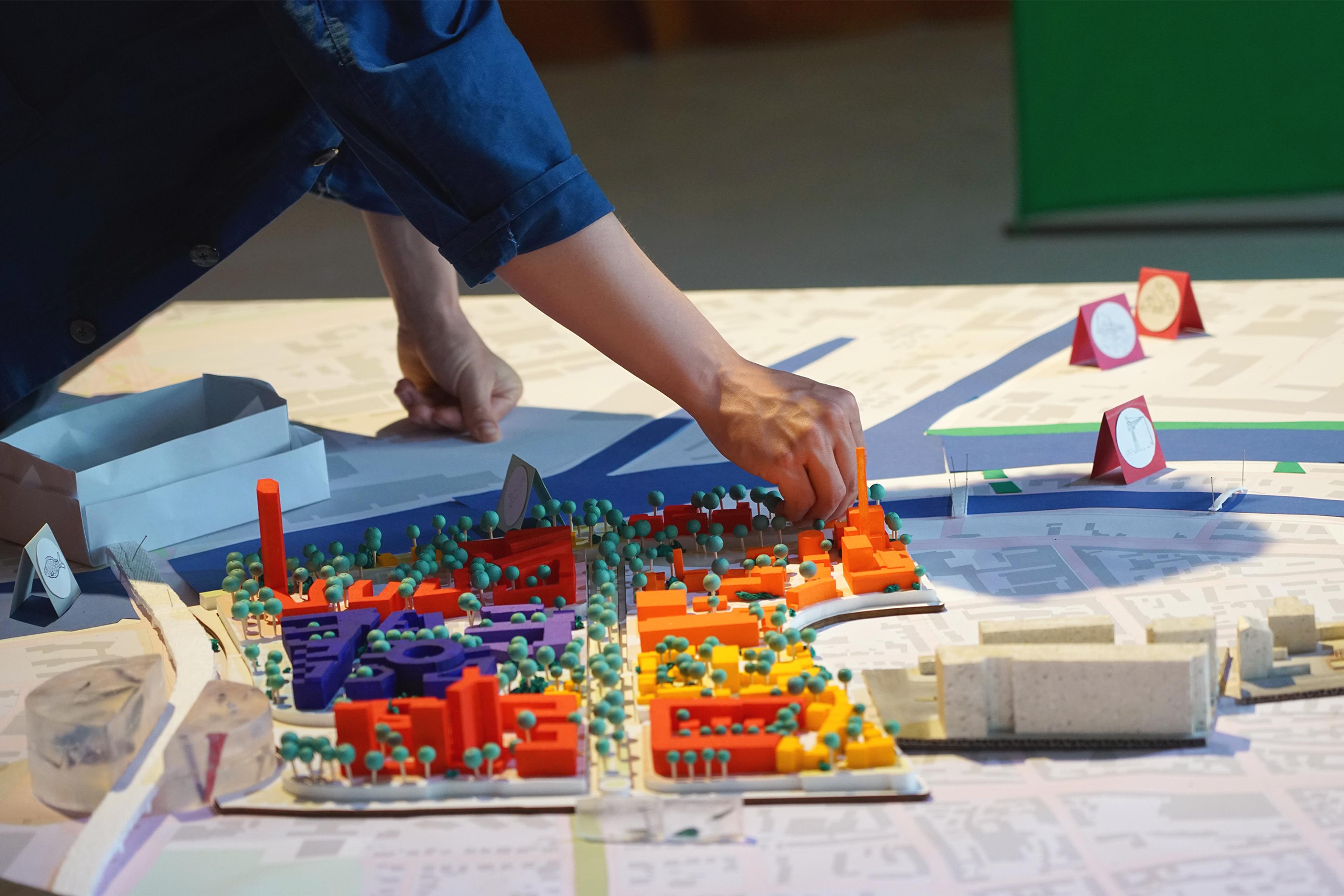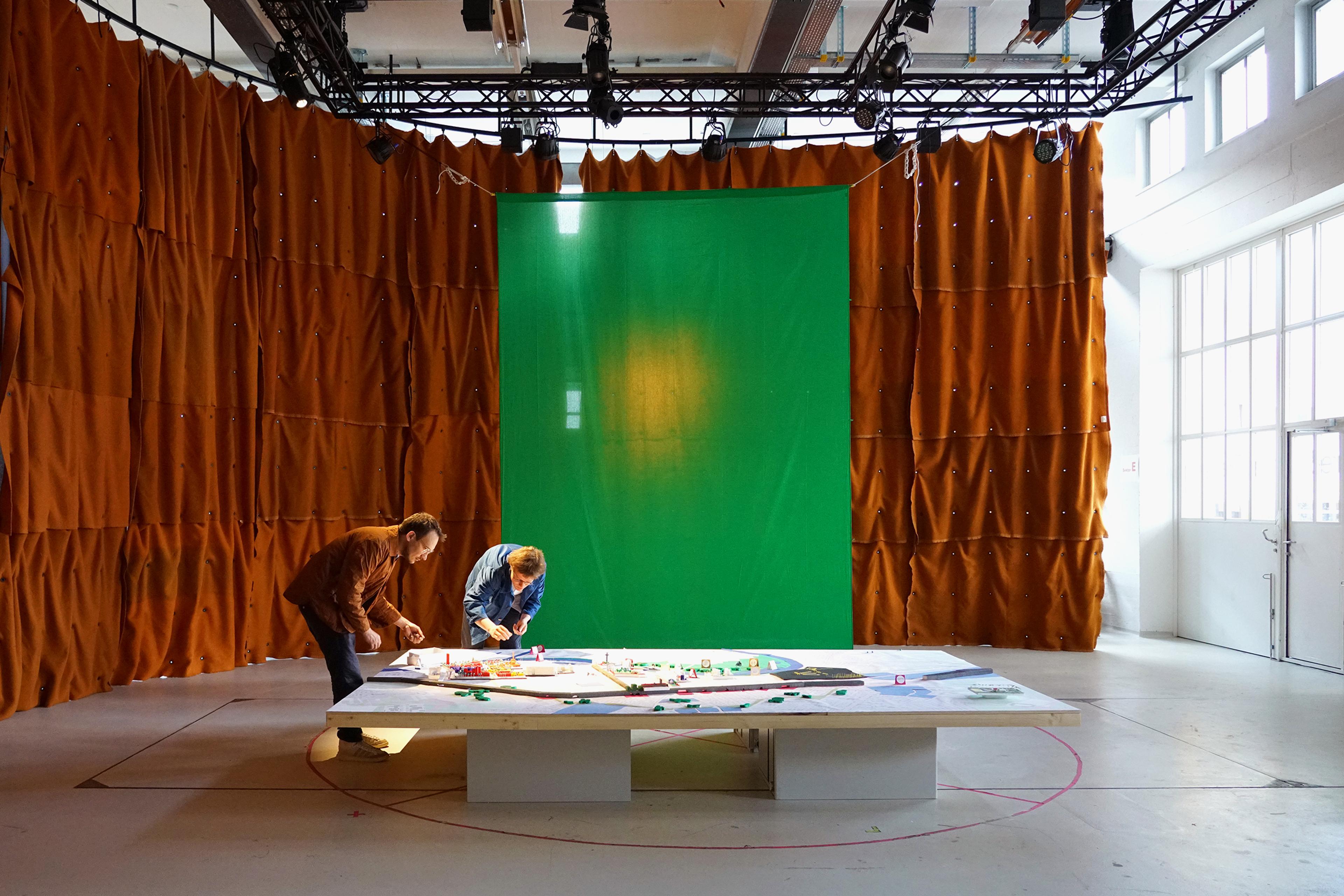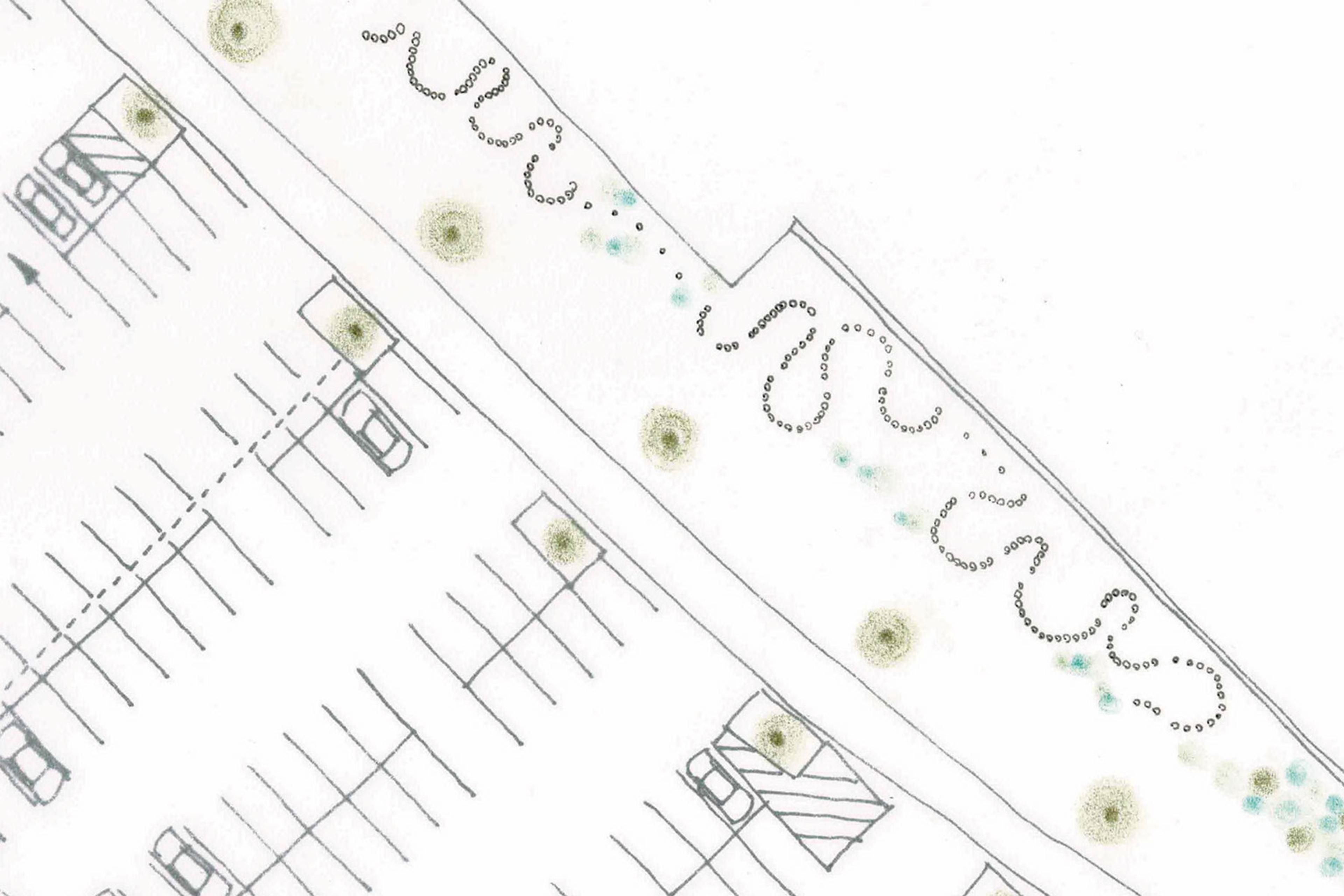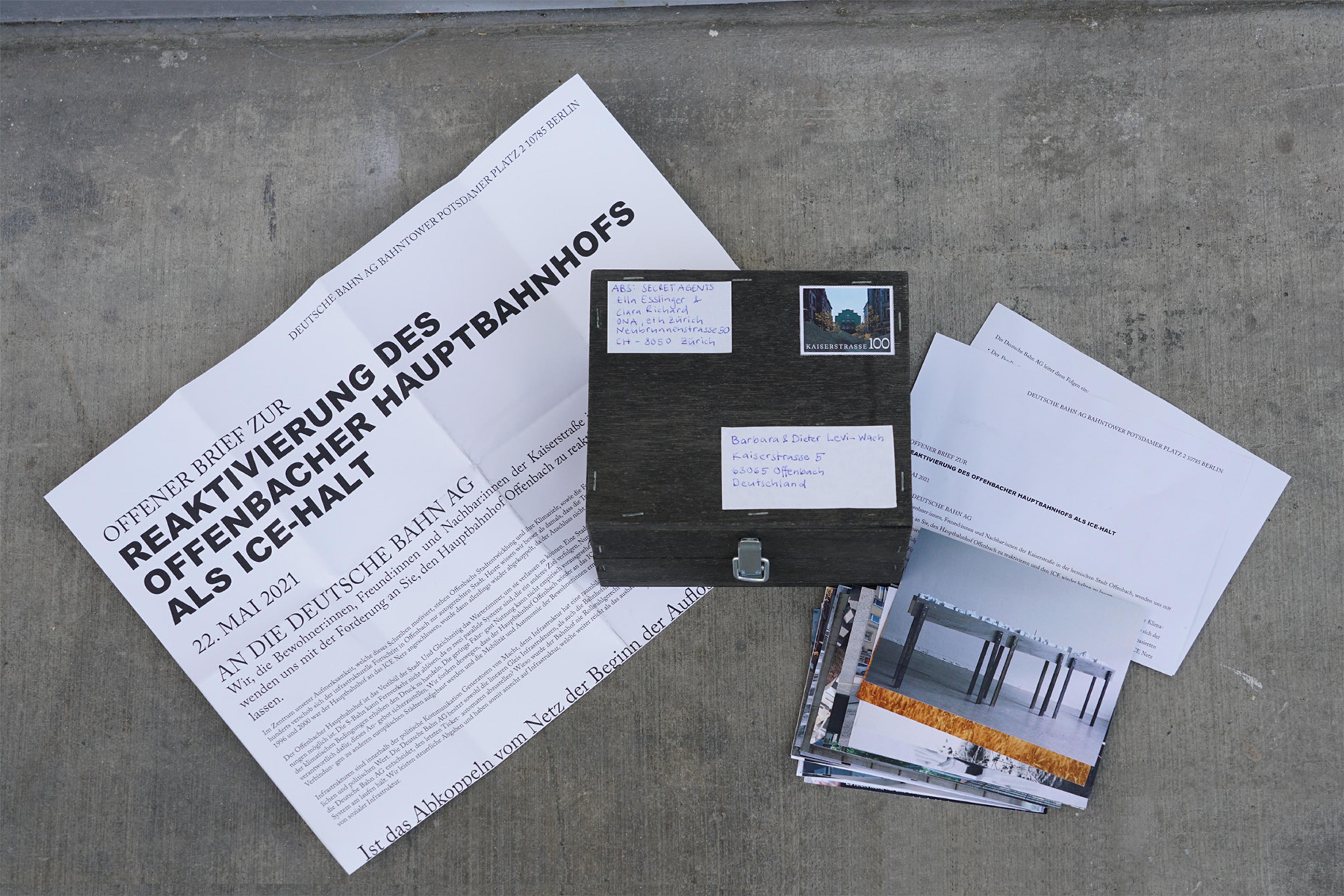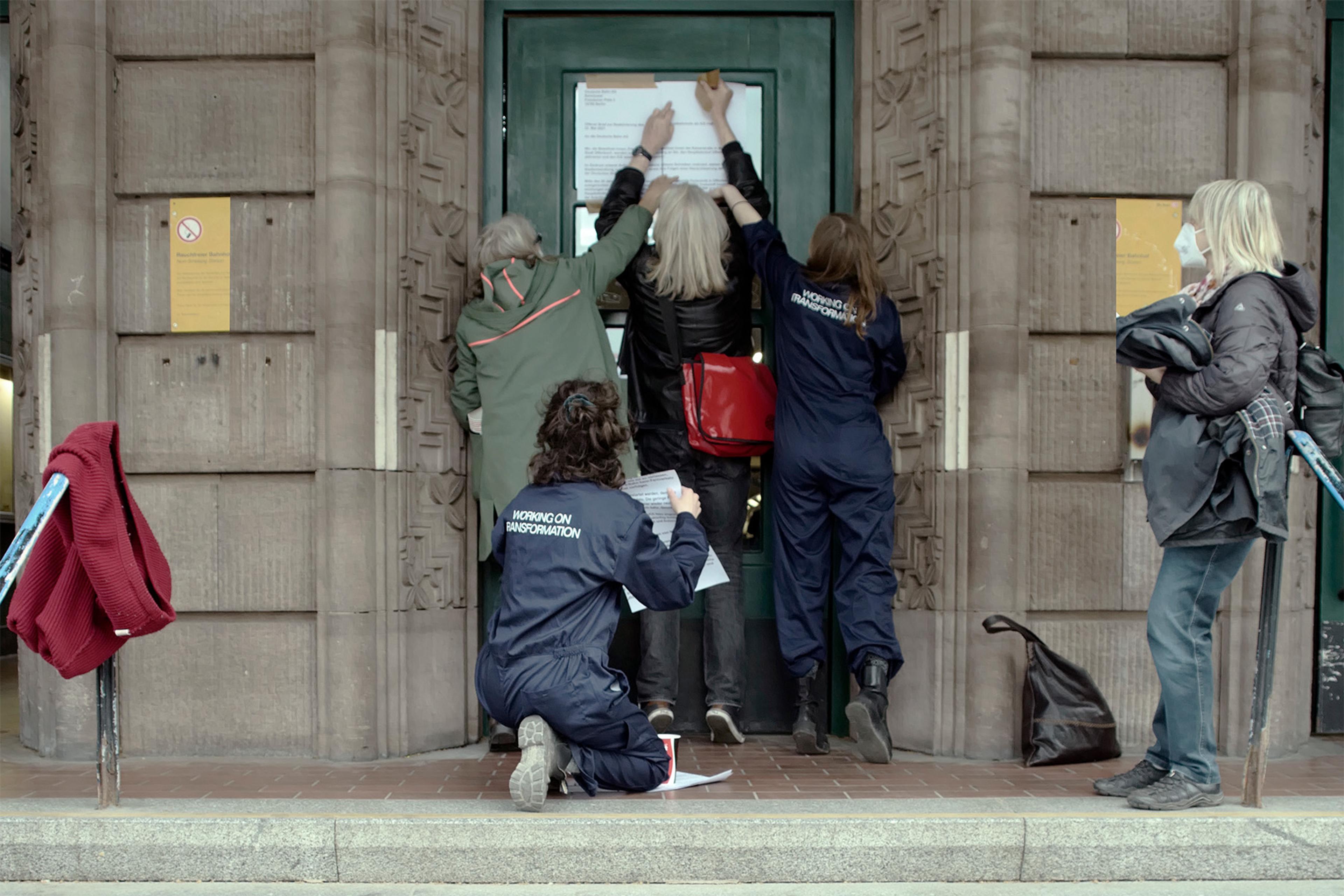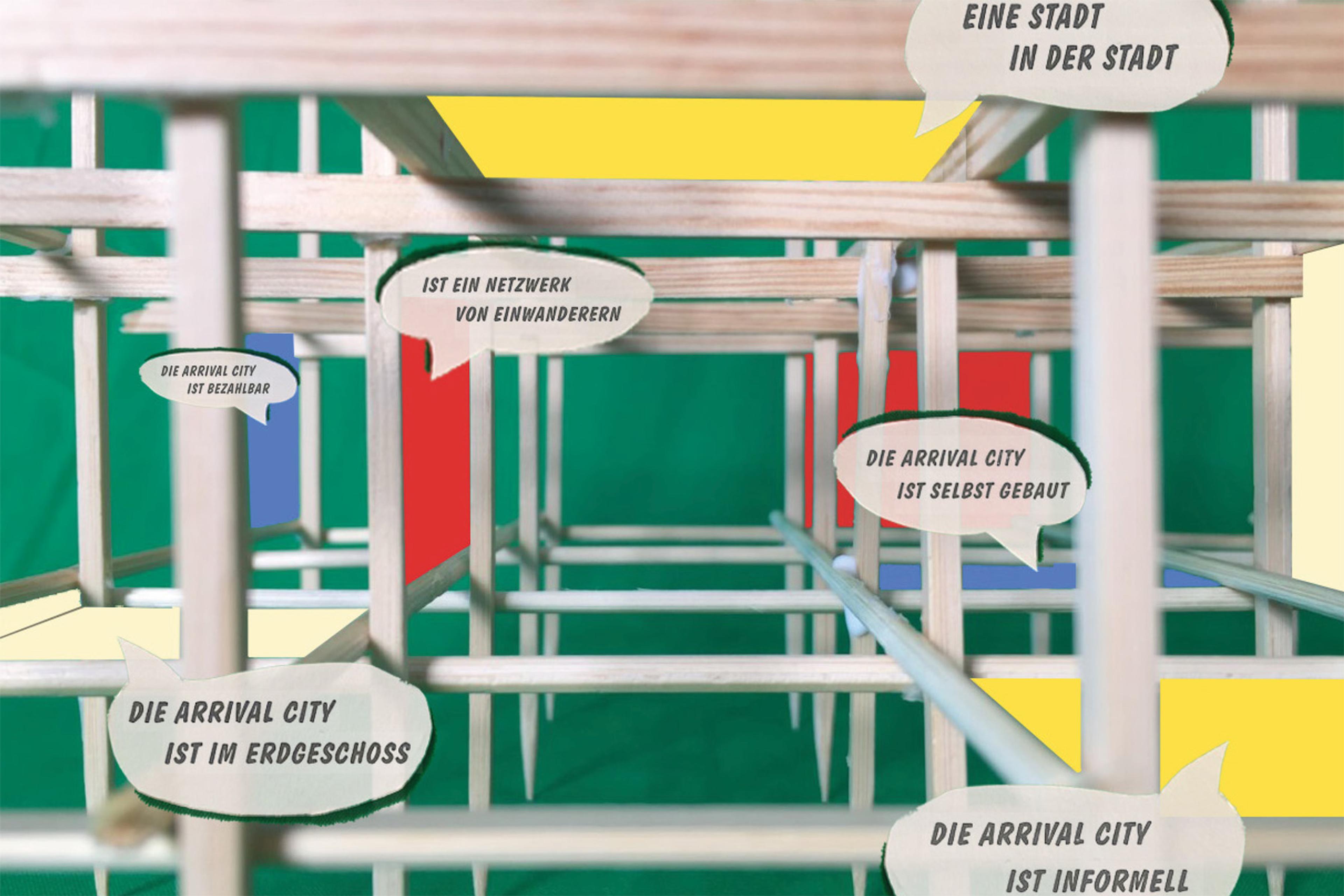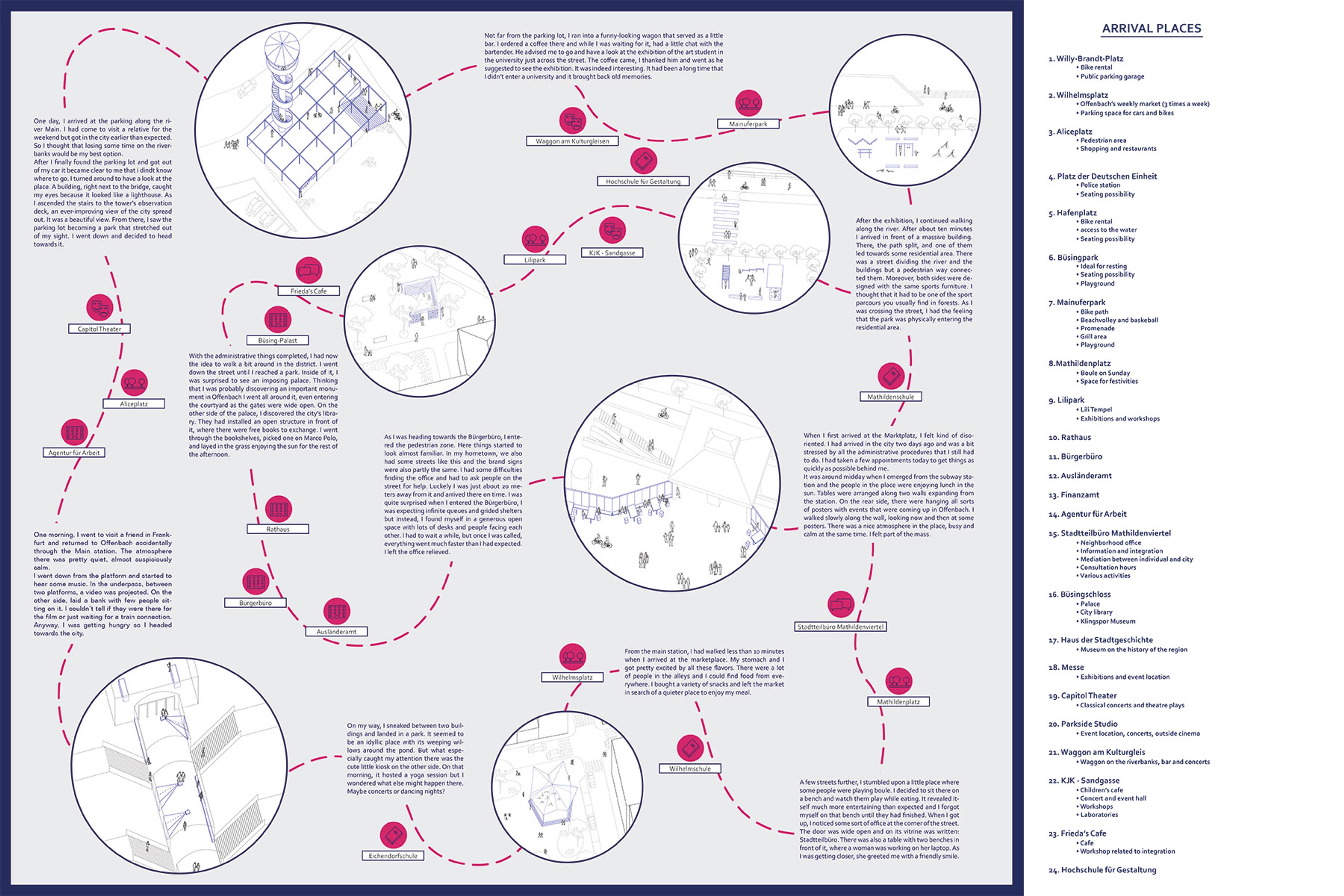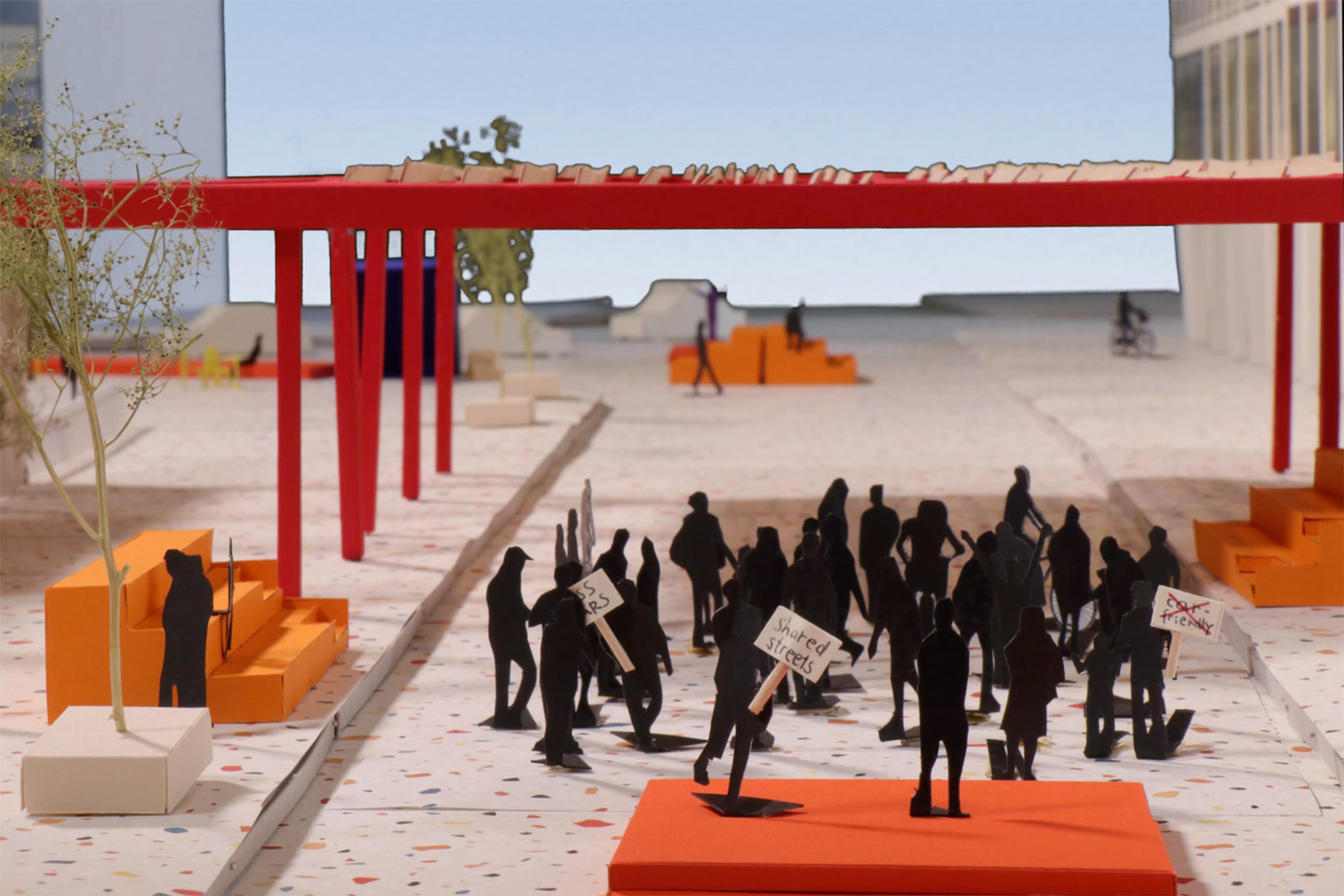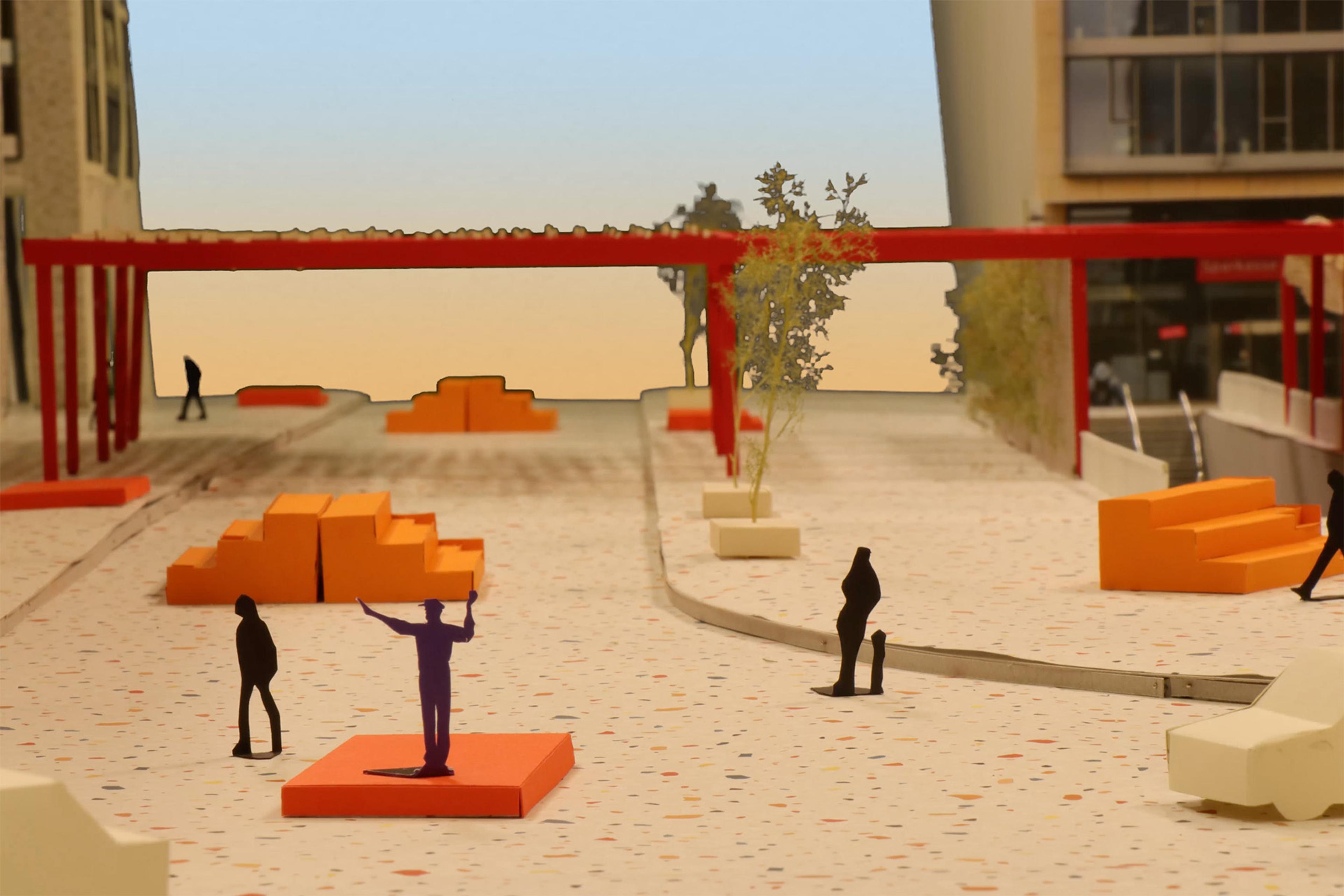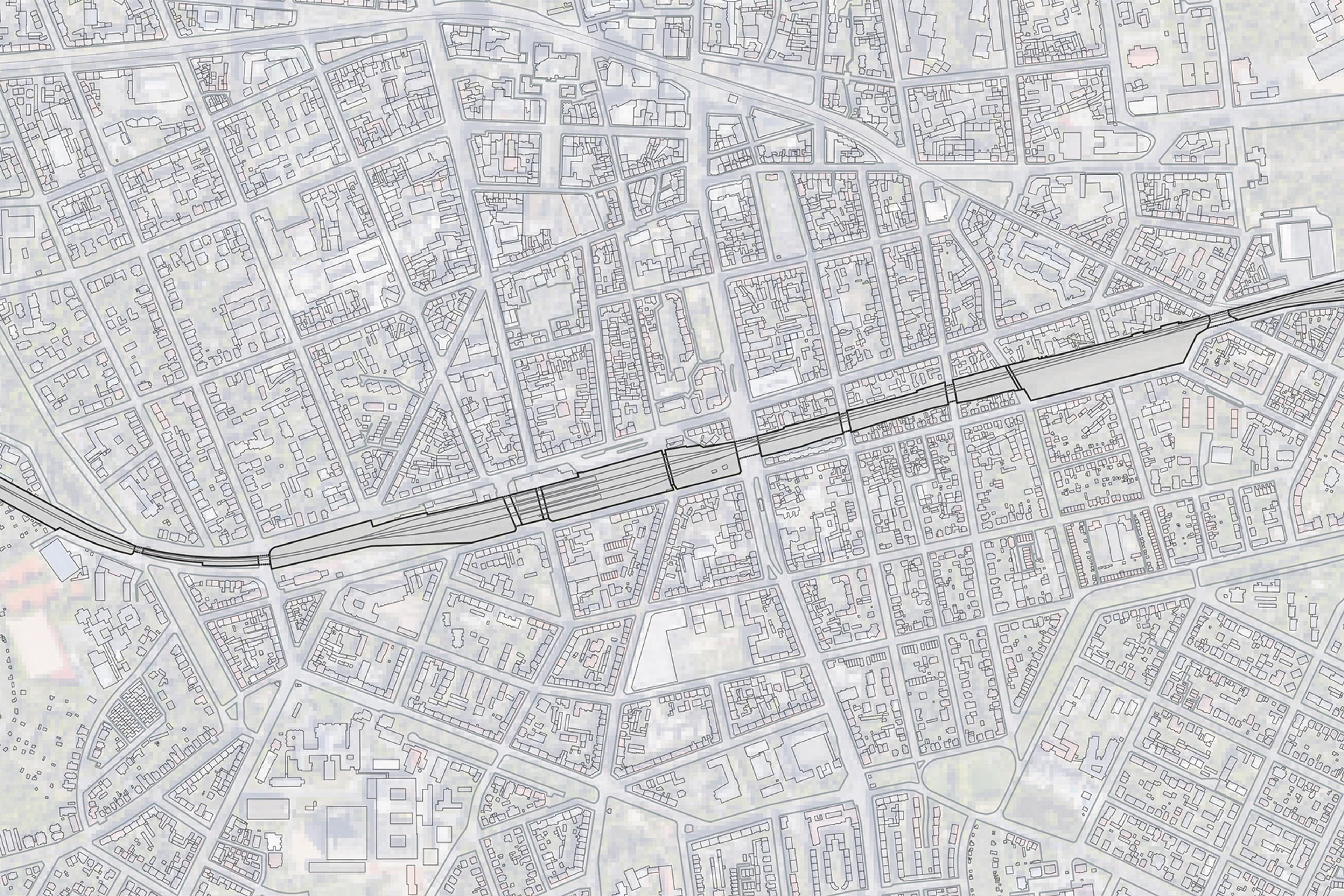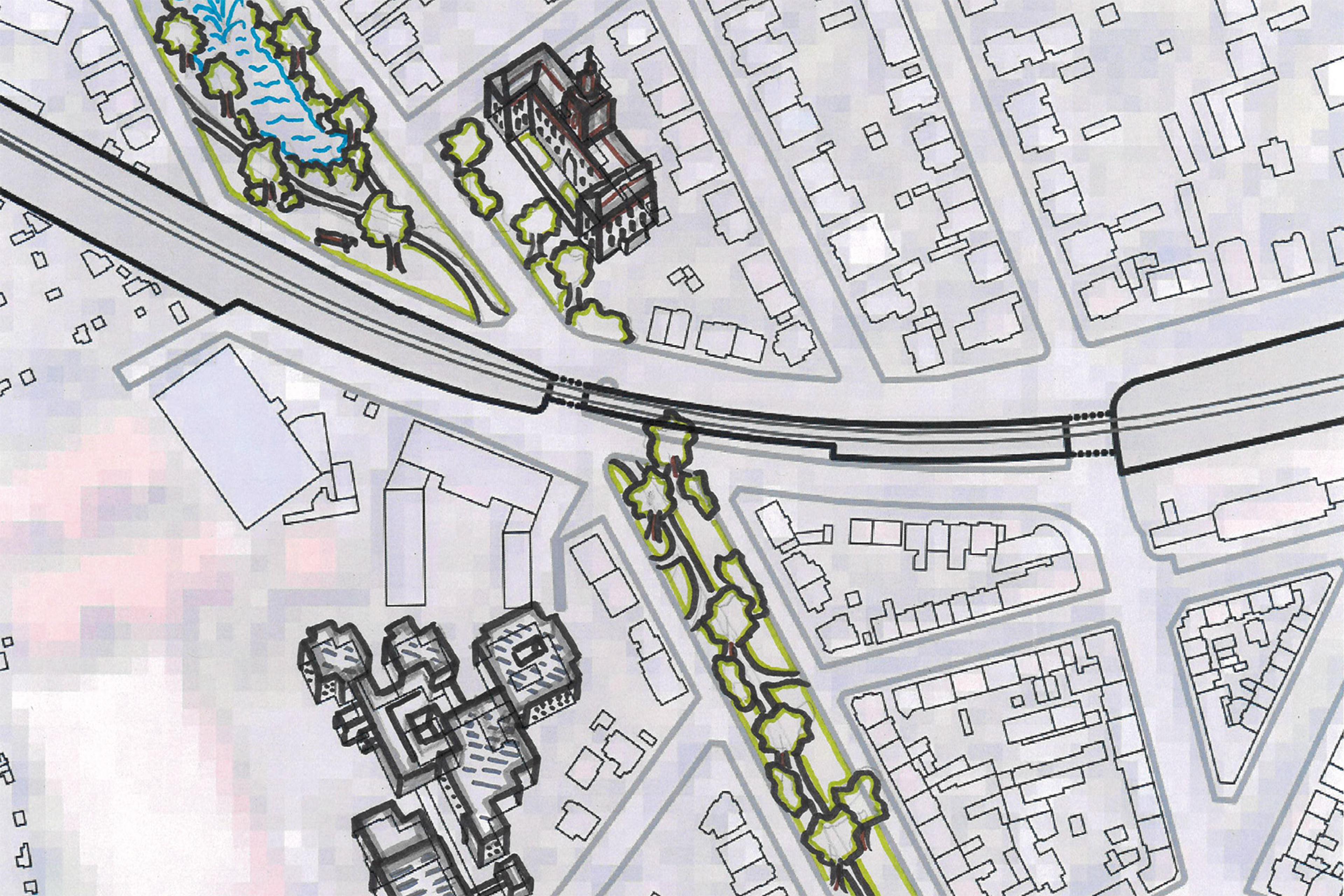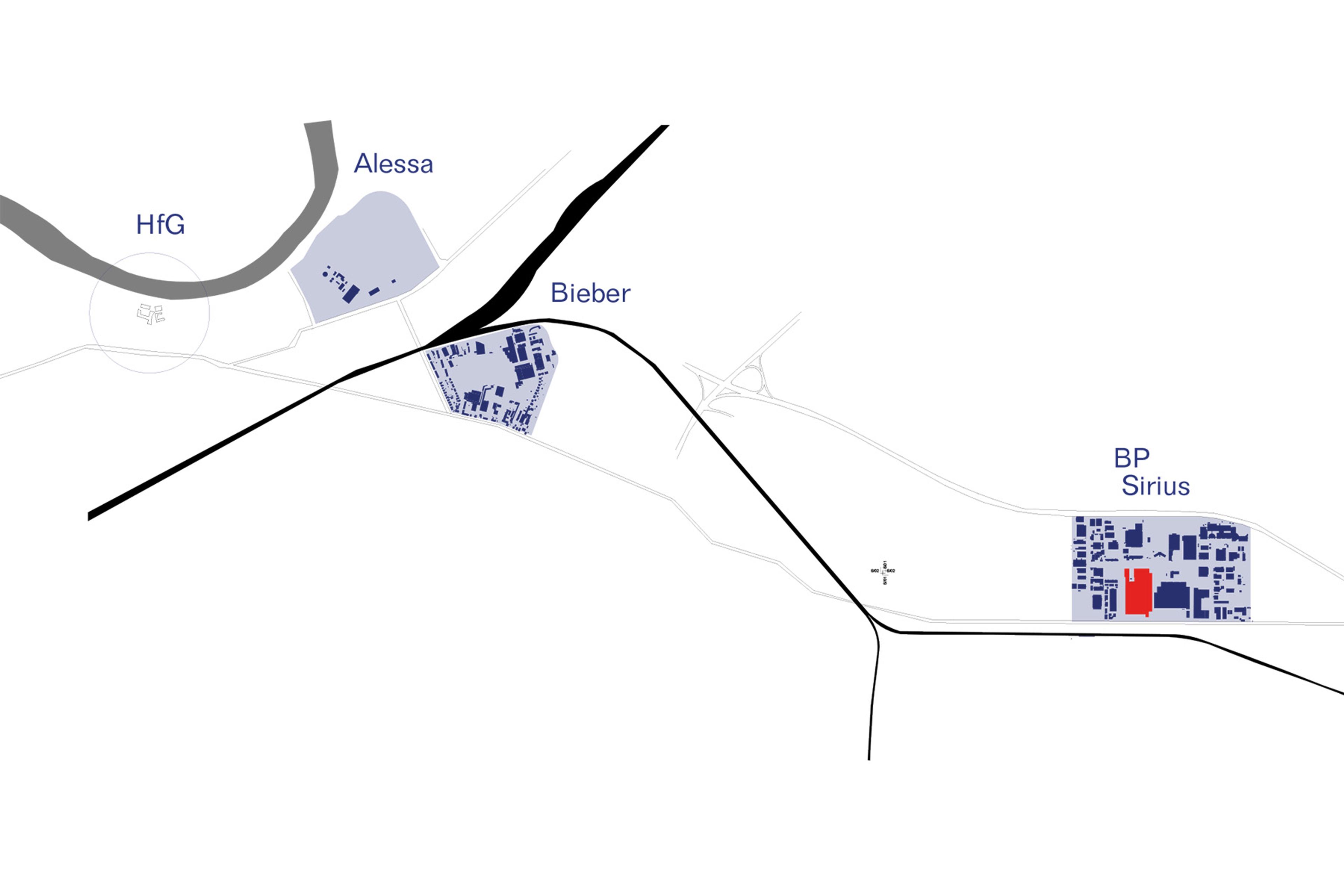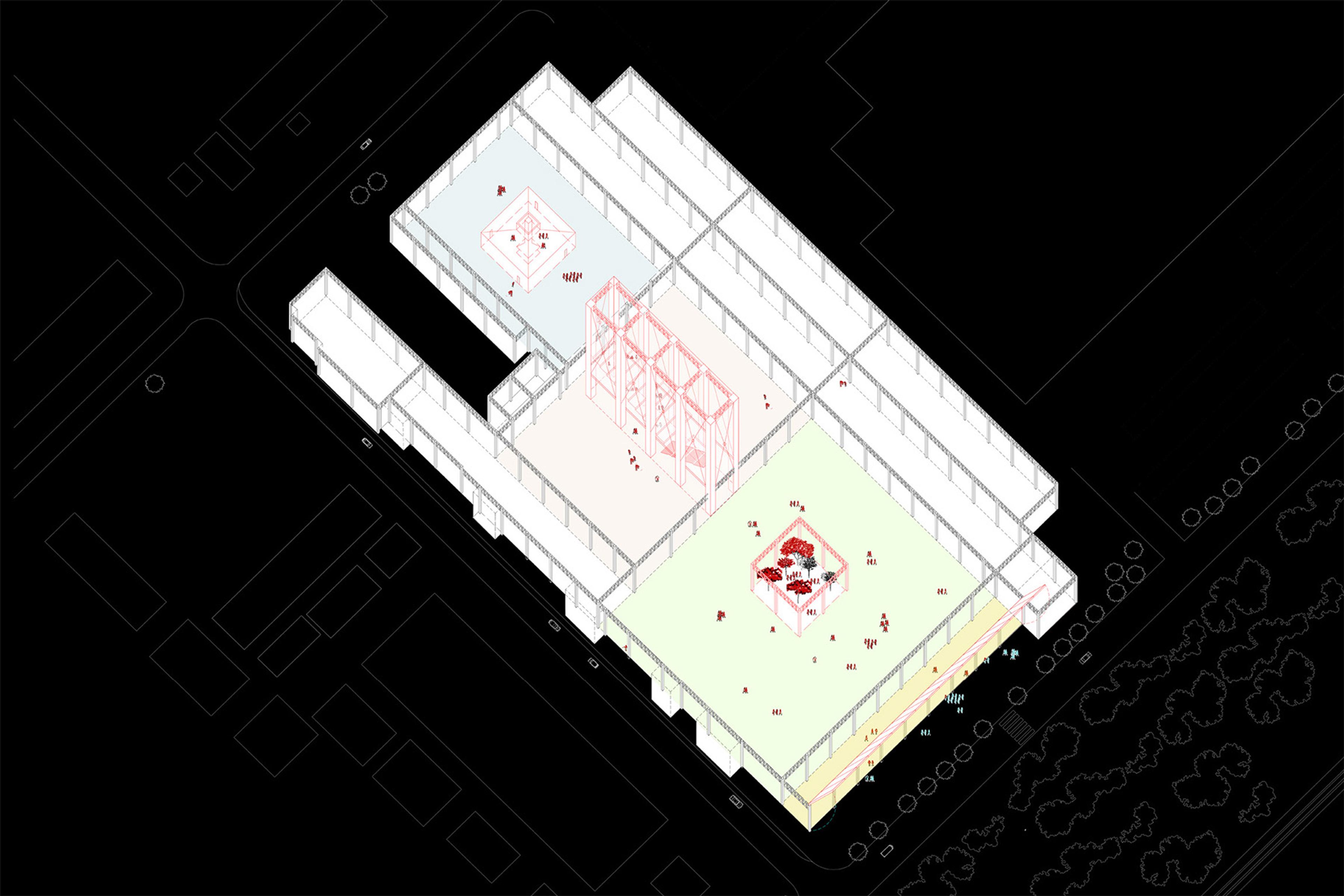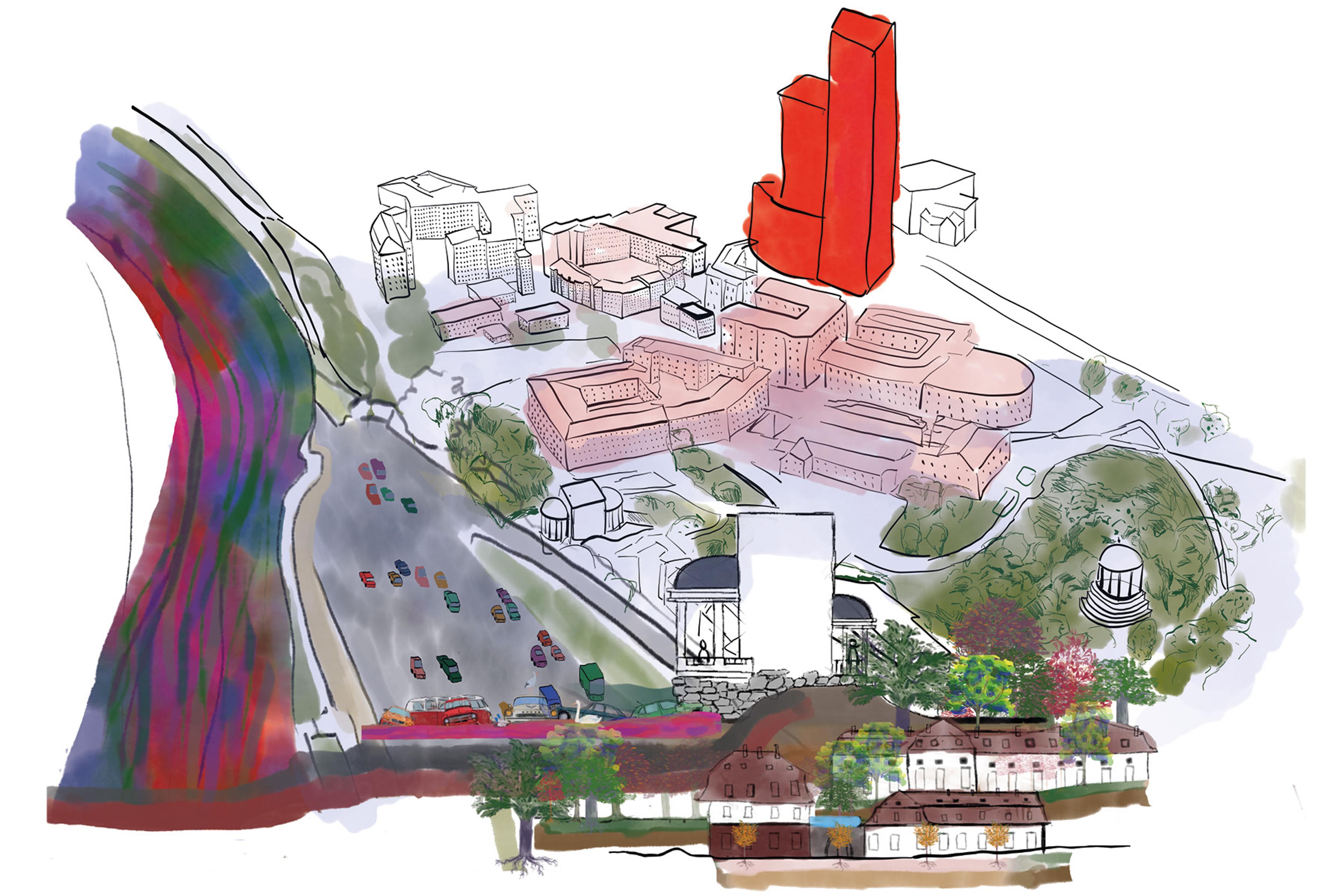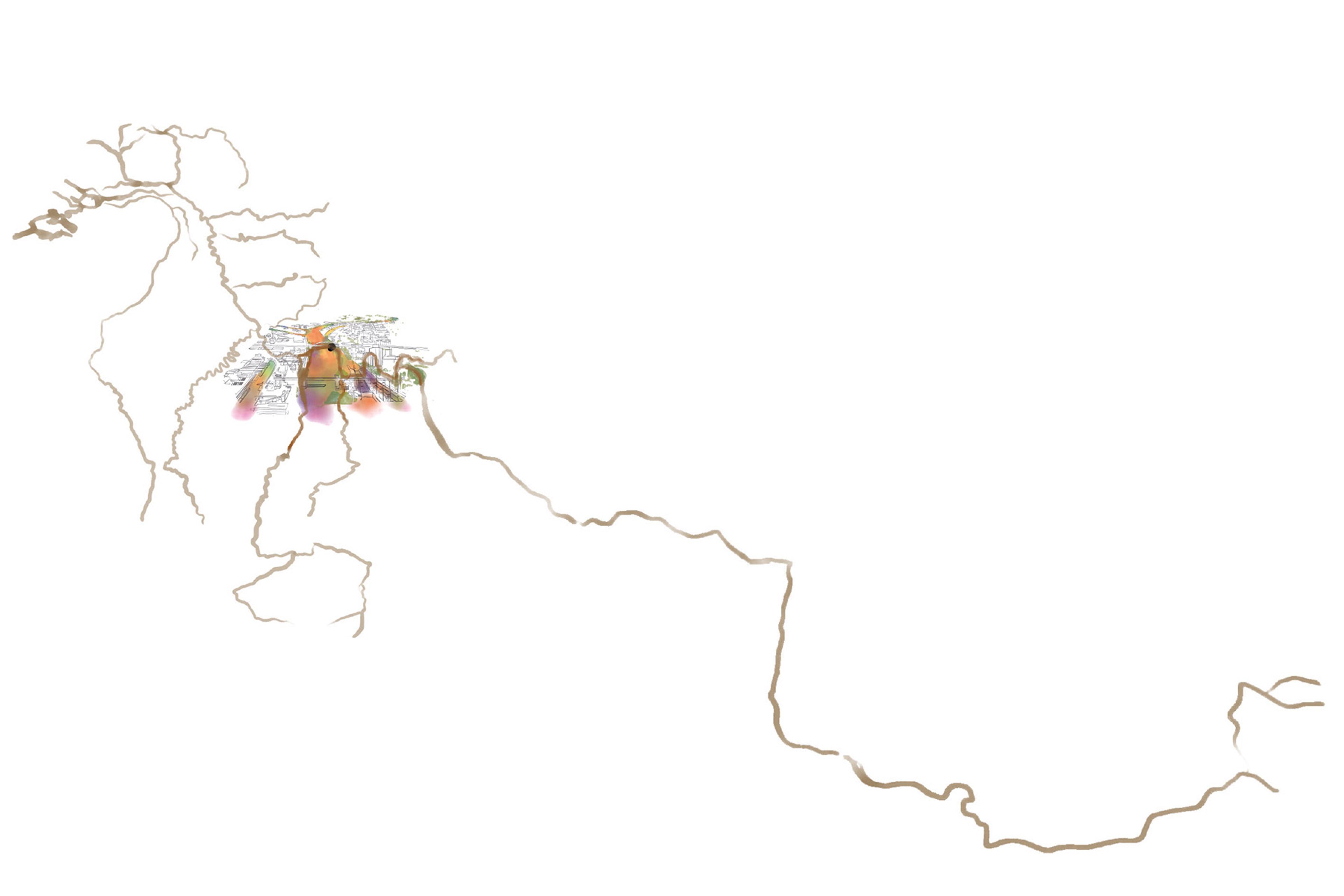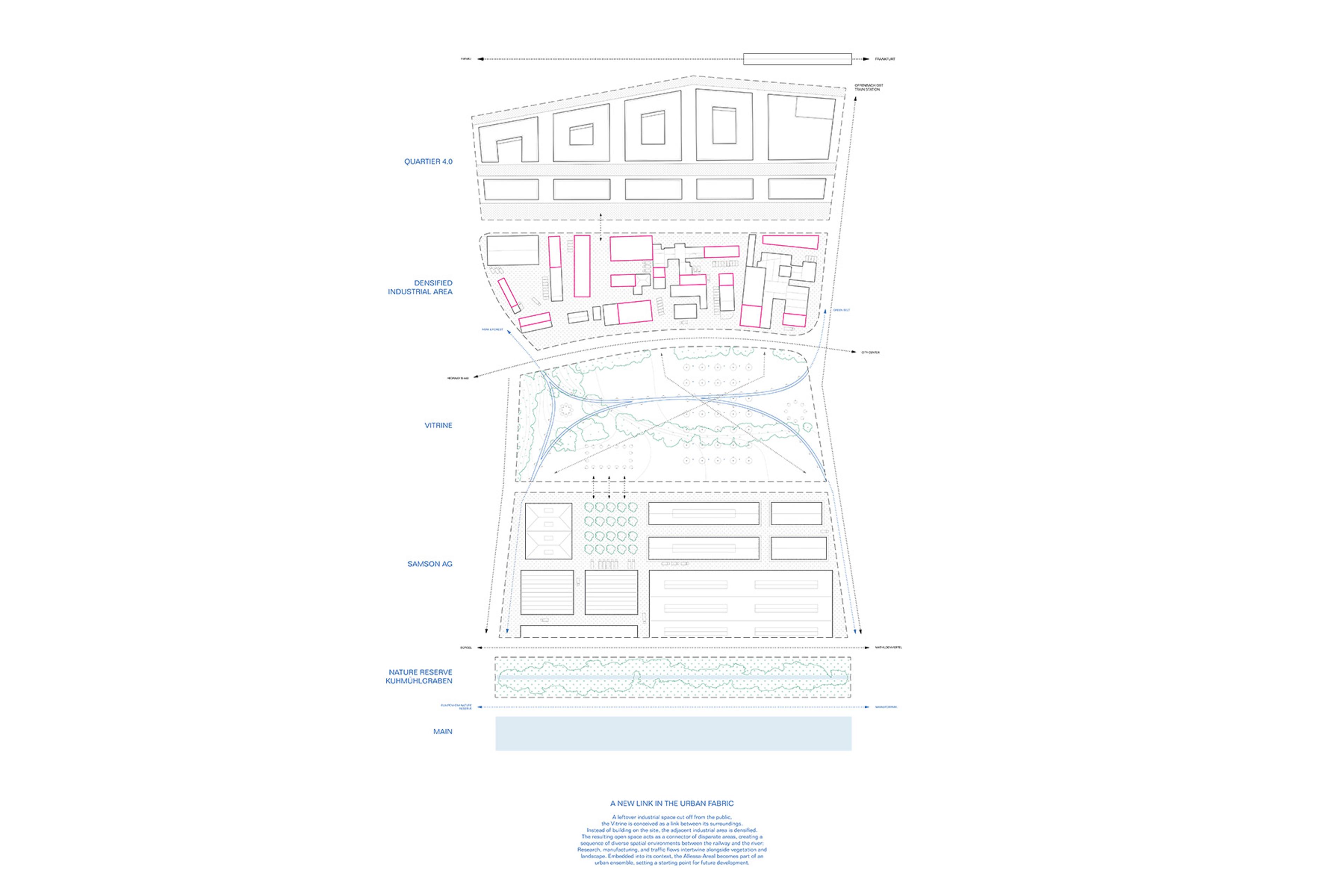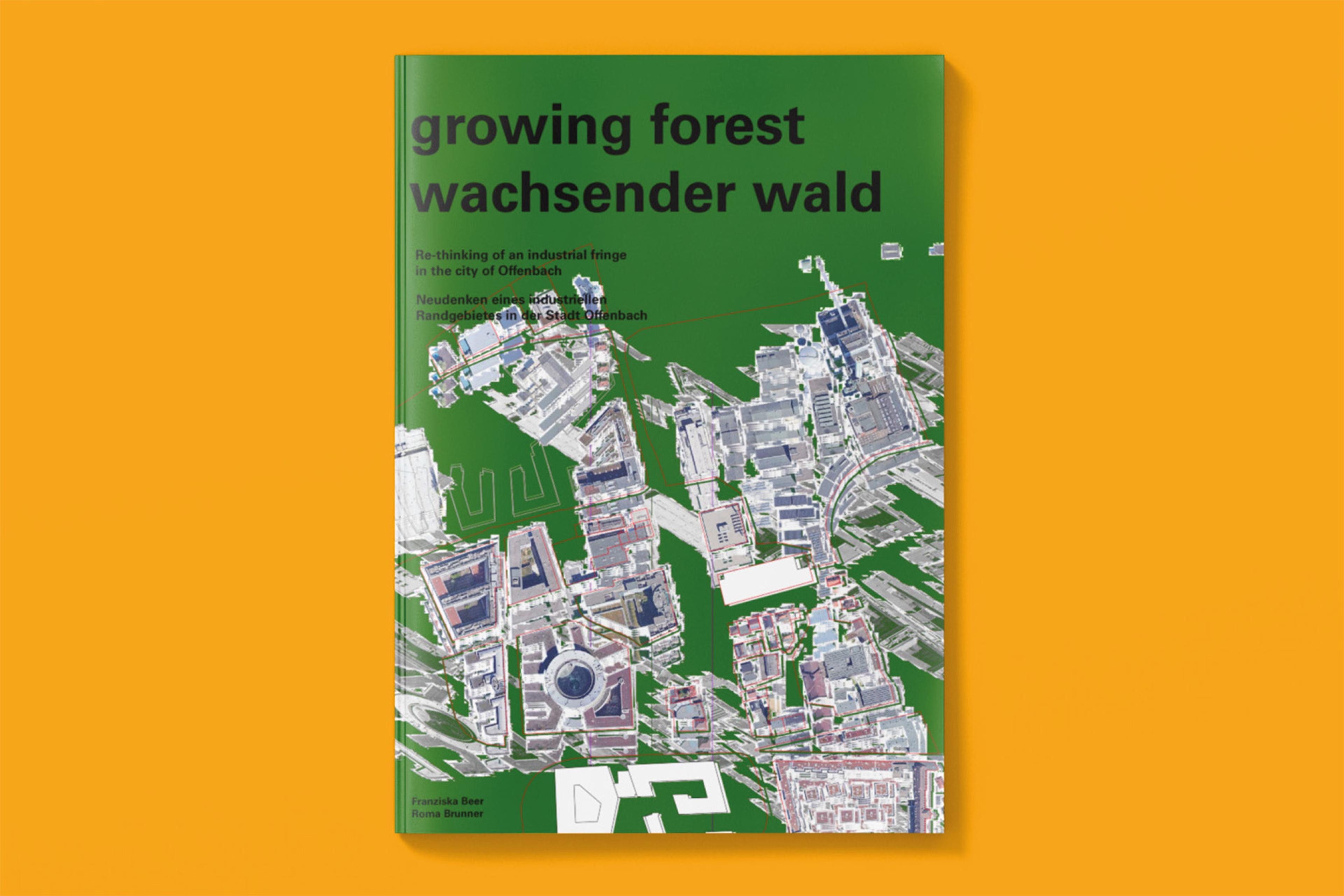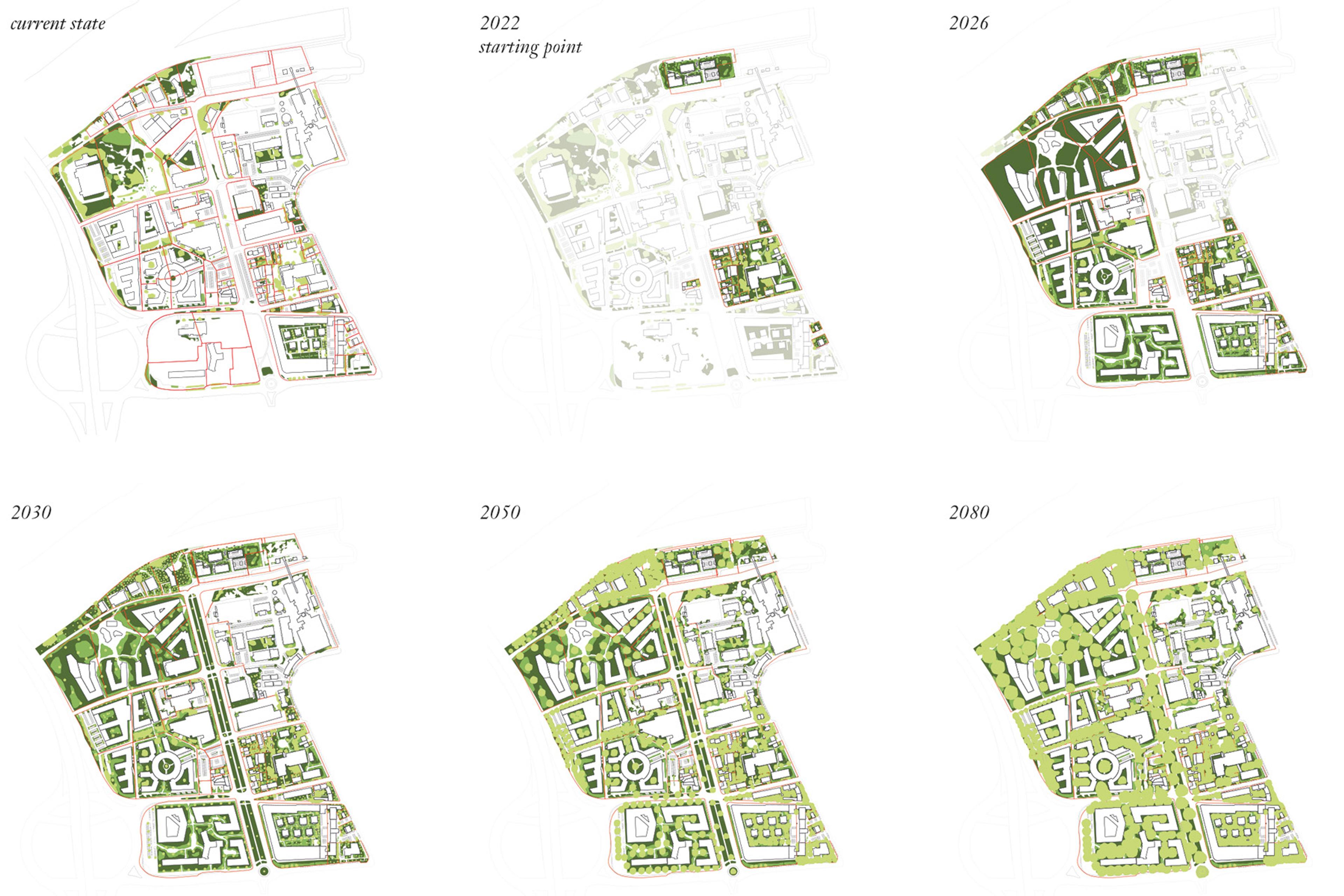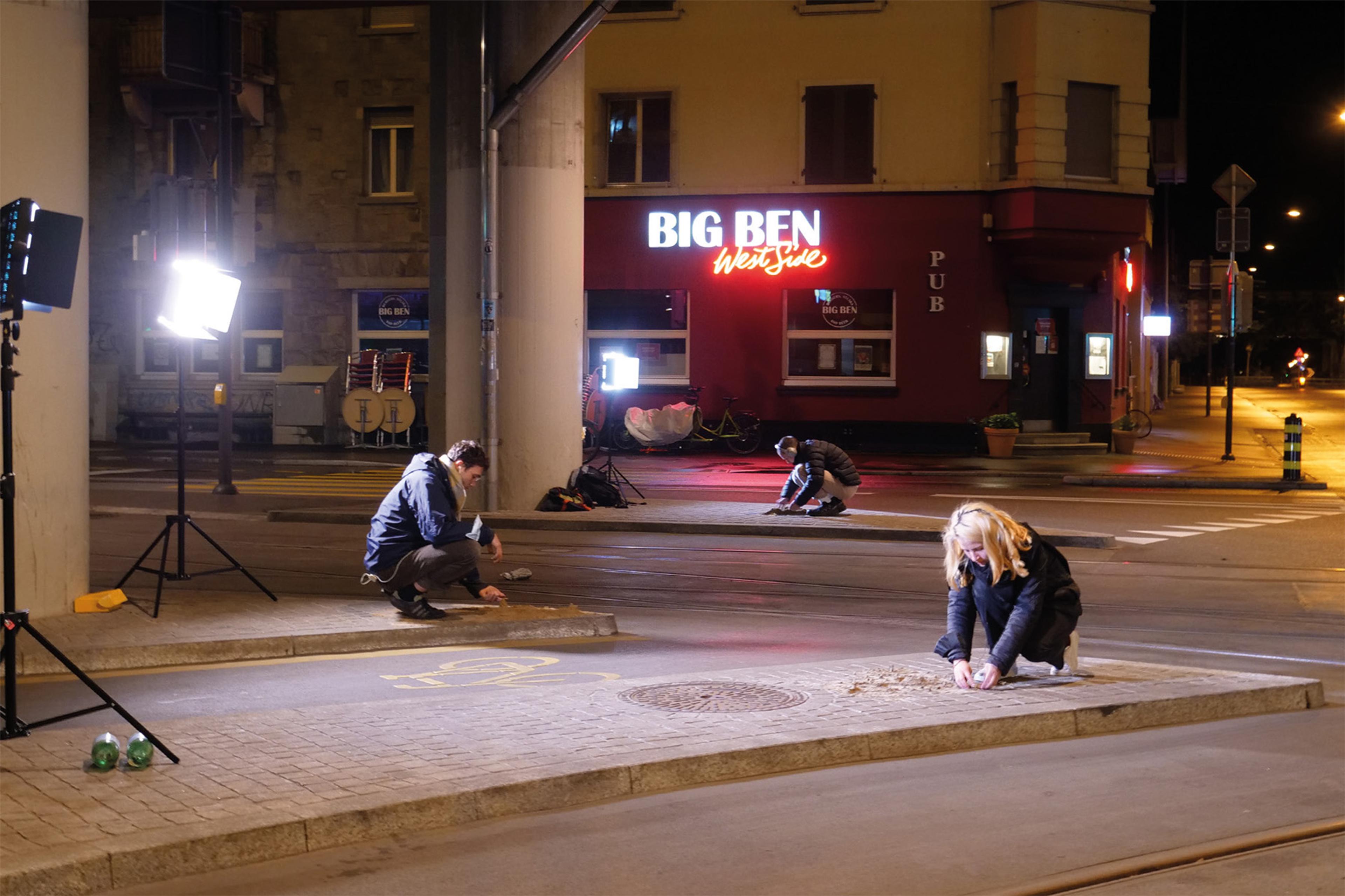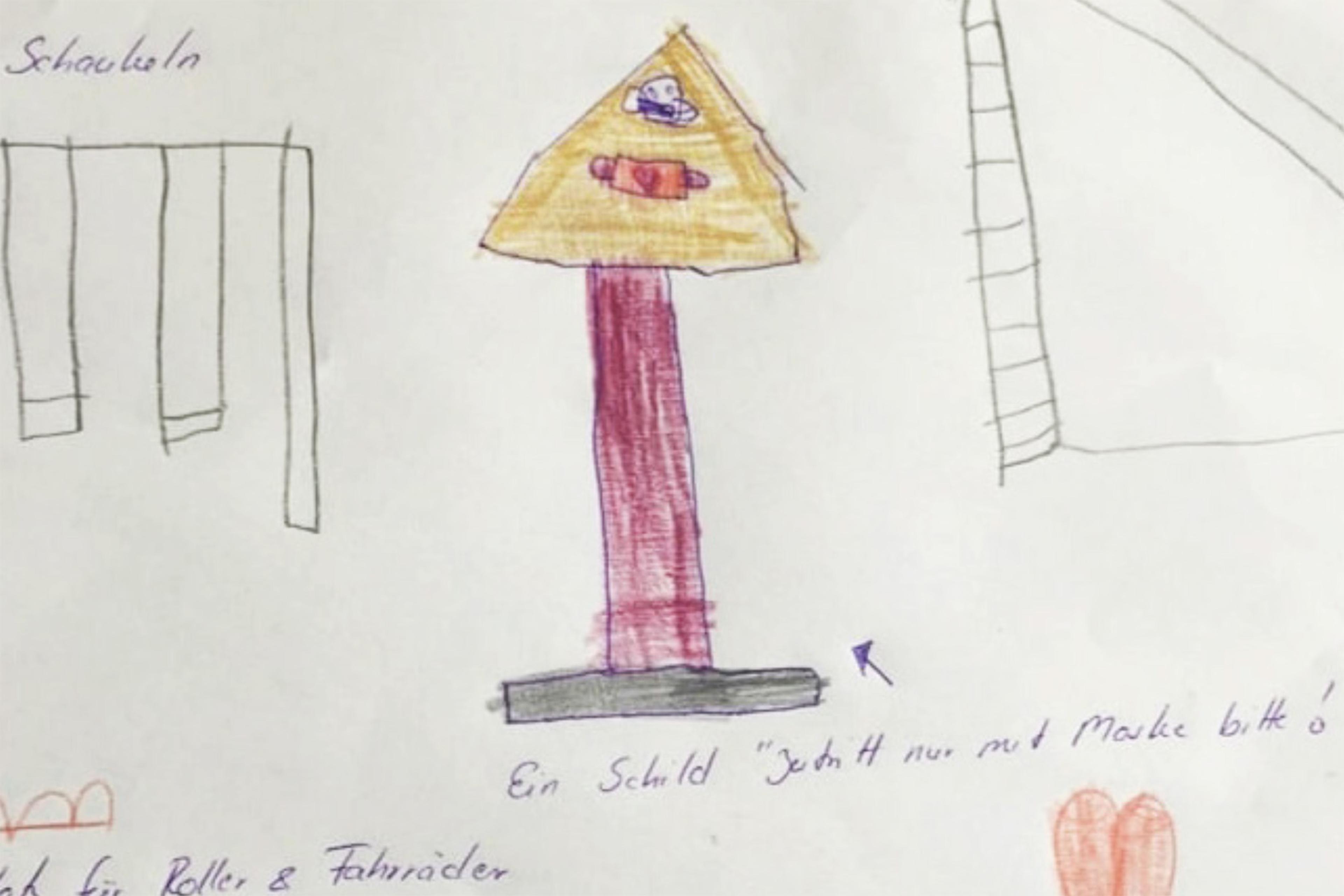Studio Offenbach – We need to talk about Infrastructure
Introduction
After investigating Schaerbeek Formation, a former railway site in Brussels, and Piraeus, the port of Athens, we chose to engage with Offenbach in this semester’s design studio. Just like the other cities, Offenbach, as “Autogerechte Stadt” (car-friendly city), has been shaped by its infrastructure.
And just like Piraeus in relation to Athens, Offenbach is a seemingly peripheral and secondary city in relation to Frankfurt am Main. However by zooming out and reading it in close relation to Frankfurt this has to be questioned and Offenbach has to be re-evaluated within a global network of flows of goods, money and people. Investigating Offenbach’s relation to Frankfurt from the studio space in Zurich Oerlikon, served as an approximation to comparable yet different dynamics.
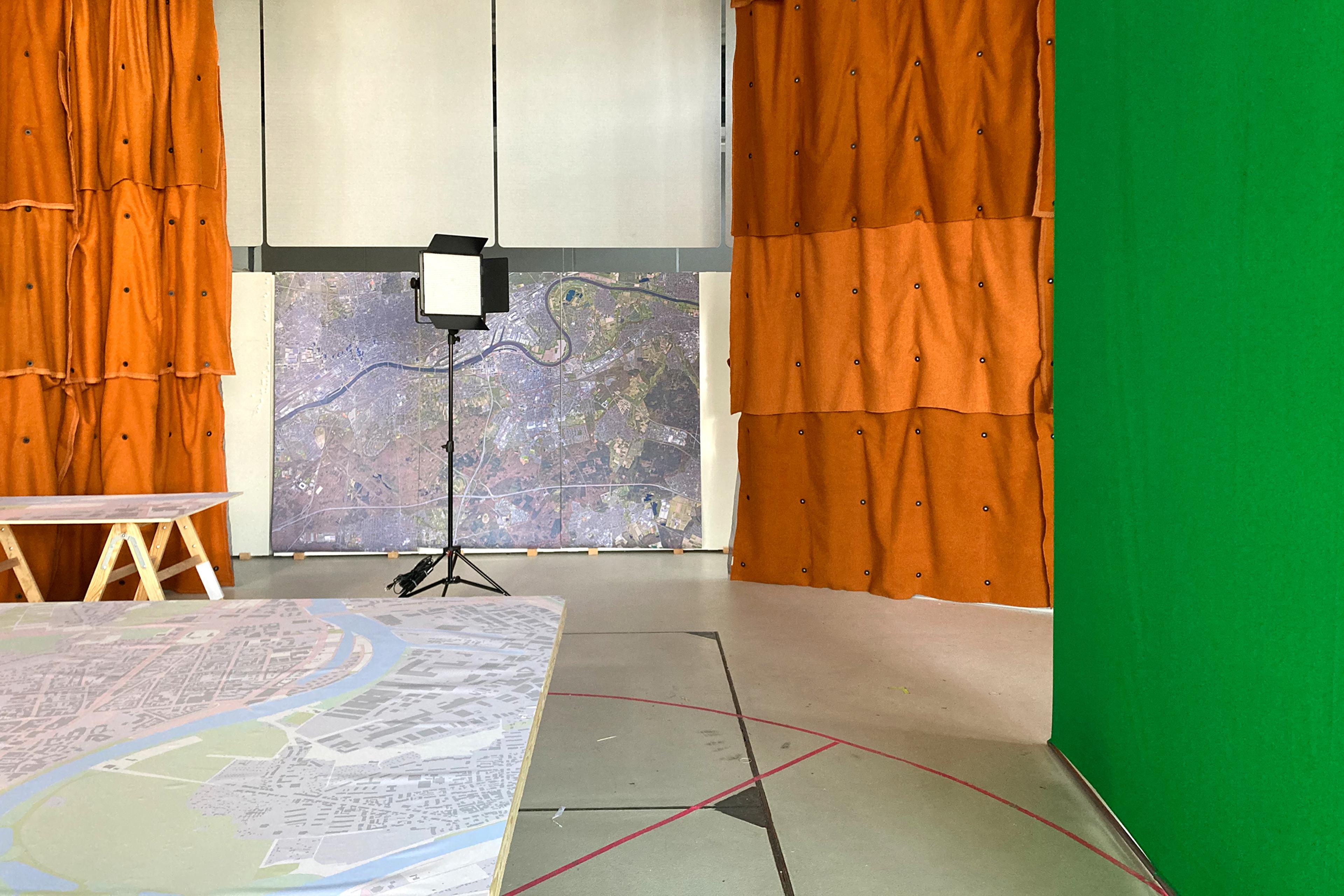
Studio setup: The Design in Dialogue Lab with a green screen and a base model of the city of Offenbach
Context
Offenbach is part of the metropolitan area Frankfurt-Rhein-Main, with other core cities like Wiesbaden, Mainz, Darmstadt and Frankfurt Airport as a global transportation hub. Offenbach itself directly borders the city of Frankfurt. This proximity to a metropolis, and a financial capital, inevitably makes the city part of larger global dynamics. Offenbach is one of the most “international” and culturally diverse cities in Germany. About 63% of the inhabitants have a so-called migrant background. This is part of what makes it – what we would call – a NEWROPEAN city: A rich and diverse place, where many things and people come together and co-exist.
Characterized by migration and mobility, Offenbach could be called an “Arrival City” within the metropolitan region Frankfurt-Rhein-Main. During the last few years, Offenbach has been trying to reposition itself as a “creative city”. The representation of Offenbach as “Arrival City” at the 15th Architecture Biennale in Venice, with the title “Reporting from the Front”, in 2016 could also be understood as part of this branding strategy. On the wall of the pavillon it said: “Offenbach is almost alright”.
Offenbach is the city with the highest unemployment rate in Hessen. It is one of the cities with the highest debts in Germany, and this even though it is part of the prosperous metropolitan region Frankfurt-Rhein-Main. As a banking capital, Frankfurt has one of the highest prices per square meter in Germany’s housing market. By now, this pressure on Frankfurt has spilled over to Offenbach, triggering transformative dynamics and infrastructural developments there.
Structure
The studio started in February 2021 and was structured in two phases: the work on a collective movie and the development of design interventions, working in smaller groups. Both phases were accompanied by a group of “experts”, both from Offenbach and Zurich. In all phases, a collective model was playing a major role in the localisation of the different interests and bringing them together. Furthermore, we tested a new format of exchange: An internal studio newsletter. Each week some members of the studio team (students, teachers, co-hosts) gave a short update on their work, on important questions, insights or experiences.
Offenbach is a city which is strongly defined by its infrastructures: The river Main, the railways and the road network. In the first step we started to analyze these infrastructures and tried to understand how they have been shaped over time and how they in return have shaped the city. From the beginning we worked on different scales: We looked at the three main infrastructures and its bigger relations, as well as on three specific zoom-ins.
The output of the first research phase was a collective movie. The goal of this phase was to understand the infrastructural development of Offenbach and how this has shaped the city, to understand important investment cycles and moments of transformation and to uncover current and future transformations and possibilities for change. In small groups, we worked on different zoom-ins, scales and themes, gathered material and became familiar with the experimental ways of telling a story through moving images.
After six weeks of working together on the collective movie, we focussed on transforming our own positions into projects in smaller groups. The “field trip” was a moment to kickstart the second phase of the studio. As the circumstances did not allow us to travel to Offenbach, we reflected back on the last weeks and tried to sense Offenbach from our distant position in Zurich, as individuals and in newly formed groups.
Using both experiences we tried to better grasp the situated aspect of our projects, the underlying reasons to engage with it over the next weeks and we went into a mode of conversation with one of the experts of the Newrope team.
The different Design in Dialogue Sessions were moments to open up the design process to peer students and guests. It were moments of collective design and co-creation in order to further sharpen and develop the design proposal. The format was not a classical “crit”. The students designed their own meeting and workshop set-up, asked questions, moderated the discussions and curated the outcome.
Student Work
For the final presentation students worked on a collective model which showed the relationships and tensions between the different proposed interventions.
Alongside students worked in groups on individual interventions which always started form a reading of the city through the lens of infrastructure. Students worked across scales and with different media. In-site interventions, poetic readings of what is already there, media campaigns and building exhibitions all stimulated the discussion of how urban life relates to existing infrastructures.
Credits
[Date] Spring 2021
[Place] Offenbach, Germany
[Studio Team] Seppe De Blust, Lukas Fink, Freek Persyn, Panayotis Antoniadis
[Students] Lea Andermatt, Nikolina Angelova, Franziska Beer, Till Blaser, Roma Brunner, Shriya Chaudhry, Christina Cibeira Lachmann, Gaad Cocimarov, Alexandra Crum Lagos, Lorenzo Cruz, Ella Eßlinger, Leo Galler, Christoph Gerken, Sofia Gloor, Joshua Guiness, Beatriz Klettner Soler, Ramona Köchli, Elisaveta Kriman, Andela Pejic, Clara Richard, Zoe Steurer, Jeremy Waterfield
[Contributors] Kai Vöckler (Urbanist and Prof. for Creativity in Urban Contexts at the HfG Offenbach), Bruno Widmer (RZU Zürich), Marianne Gatti (D-BAUG, Institute for Spatial Development), Sabina Uffer (RZU Zürich), Tobias Kurtz and Marion Rüber-Steins (Urban Planning Departement Offenbach)

